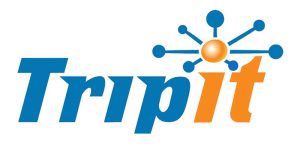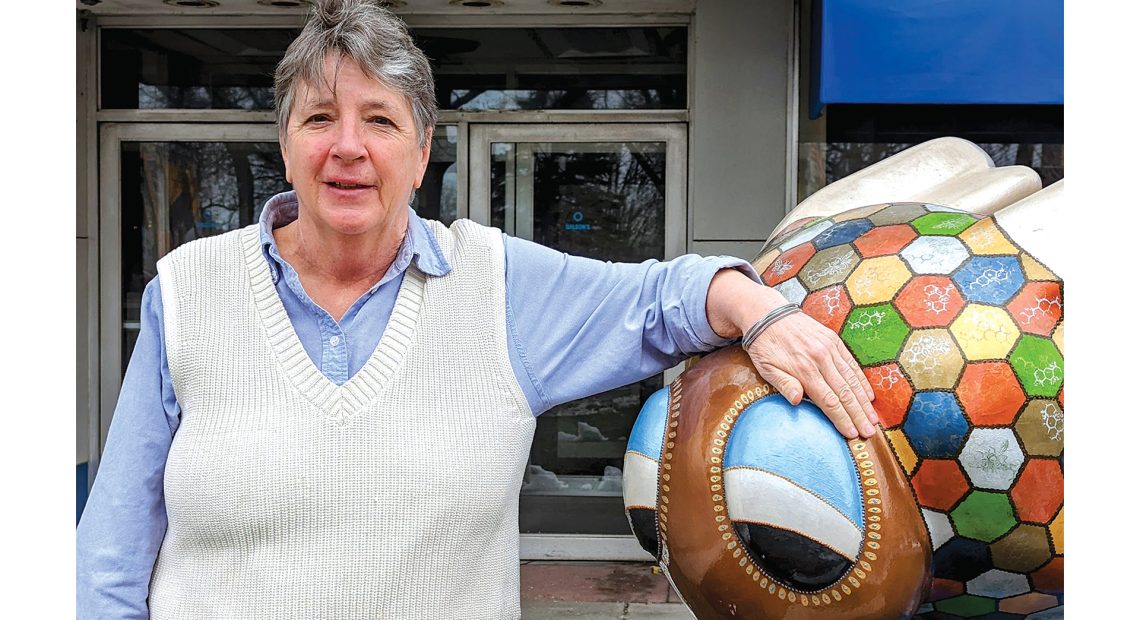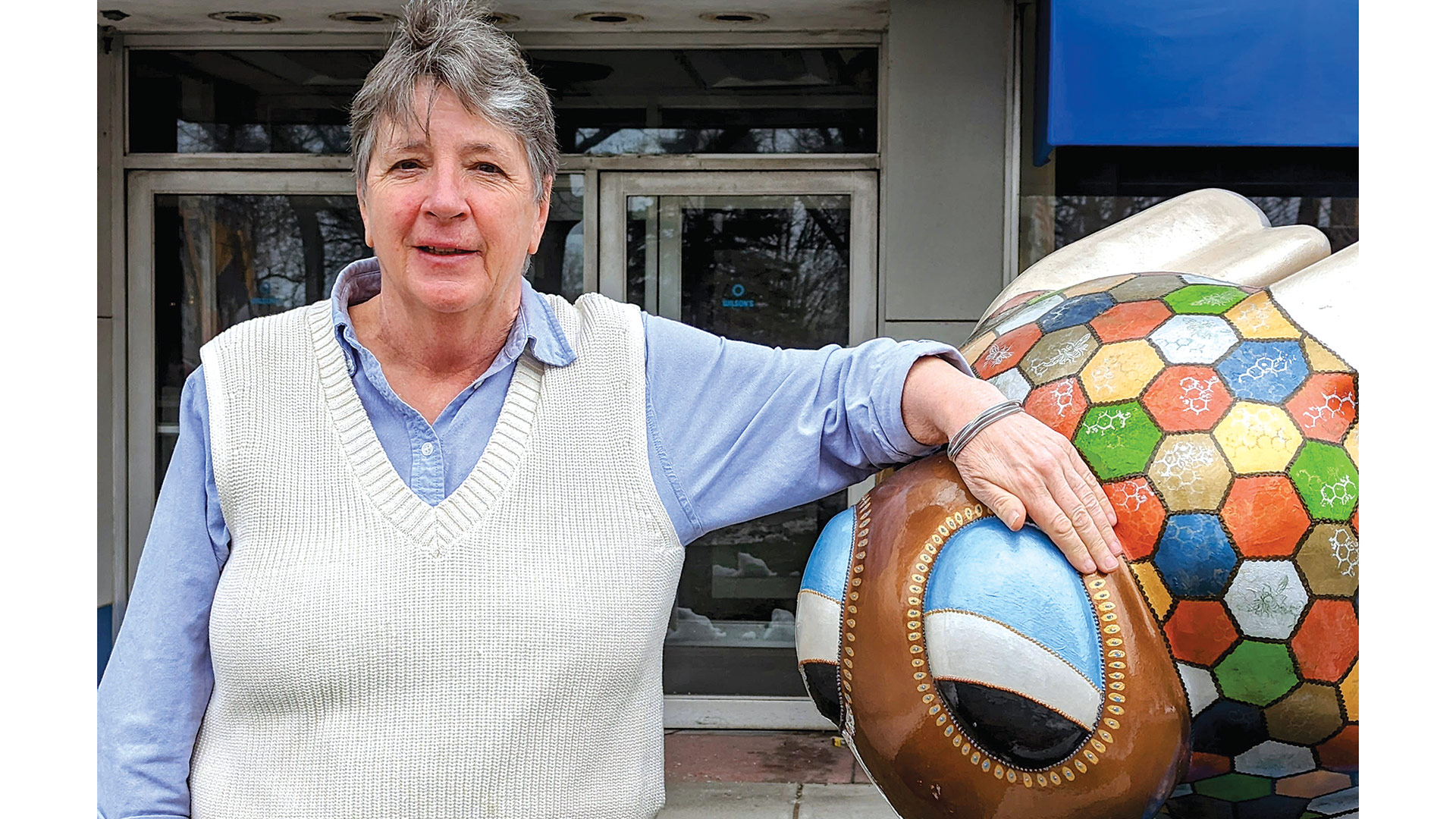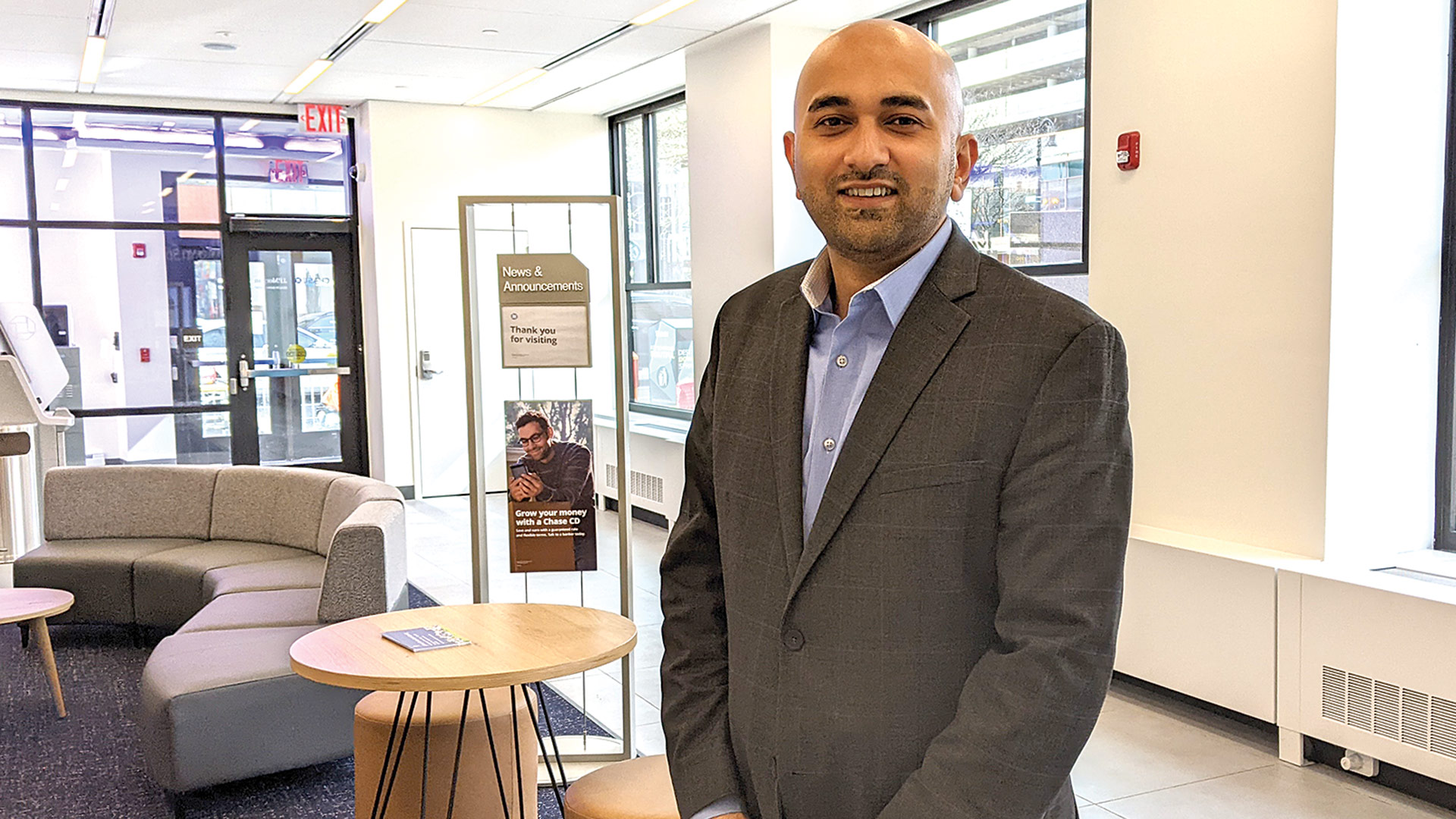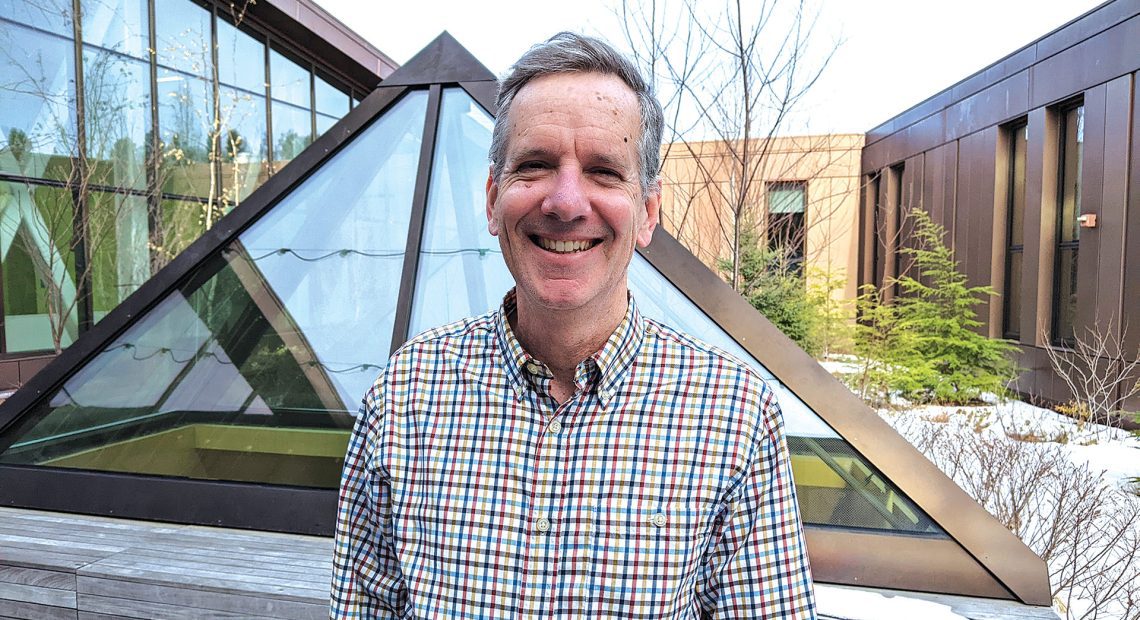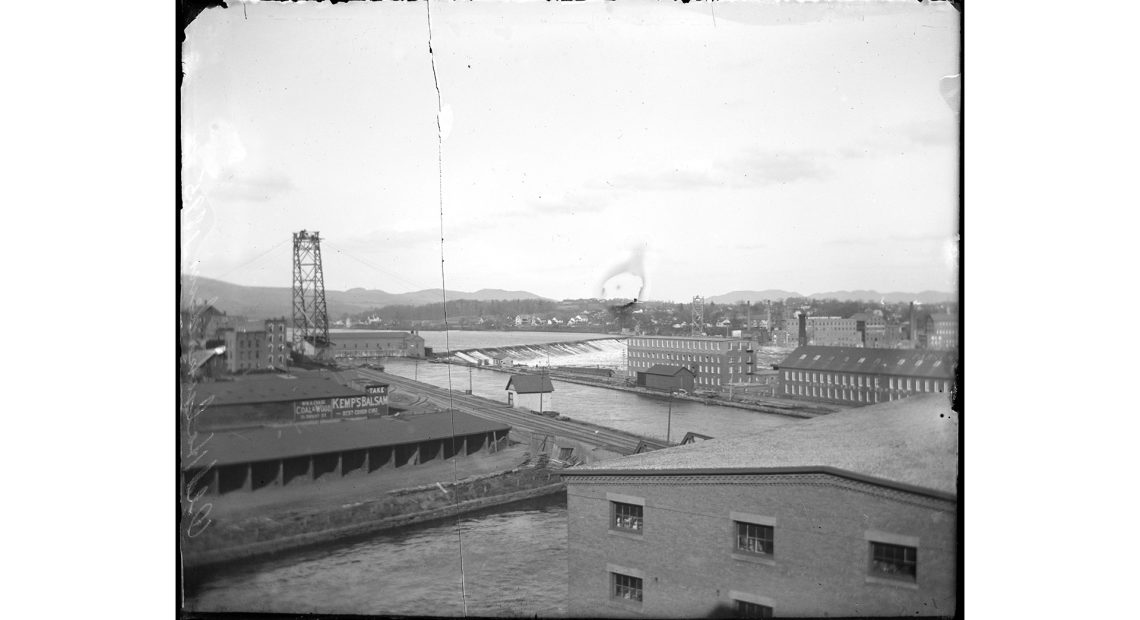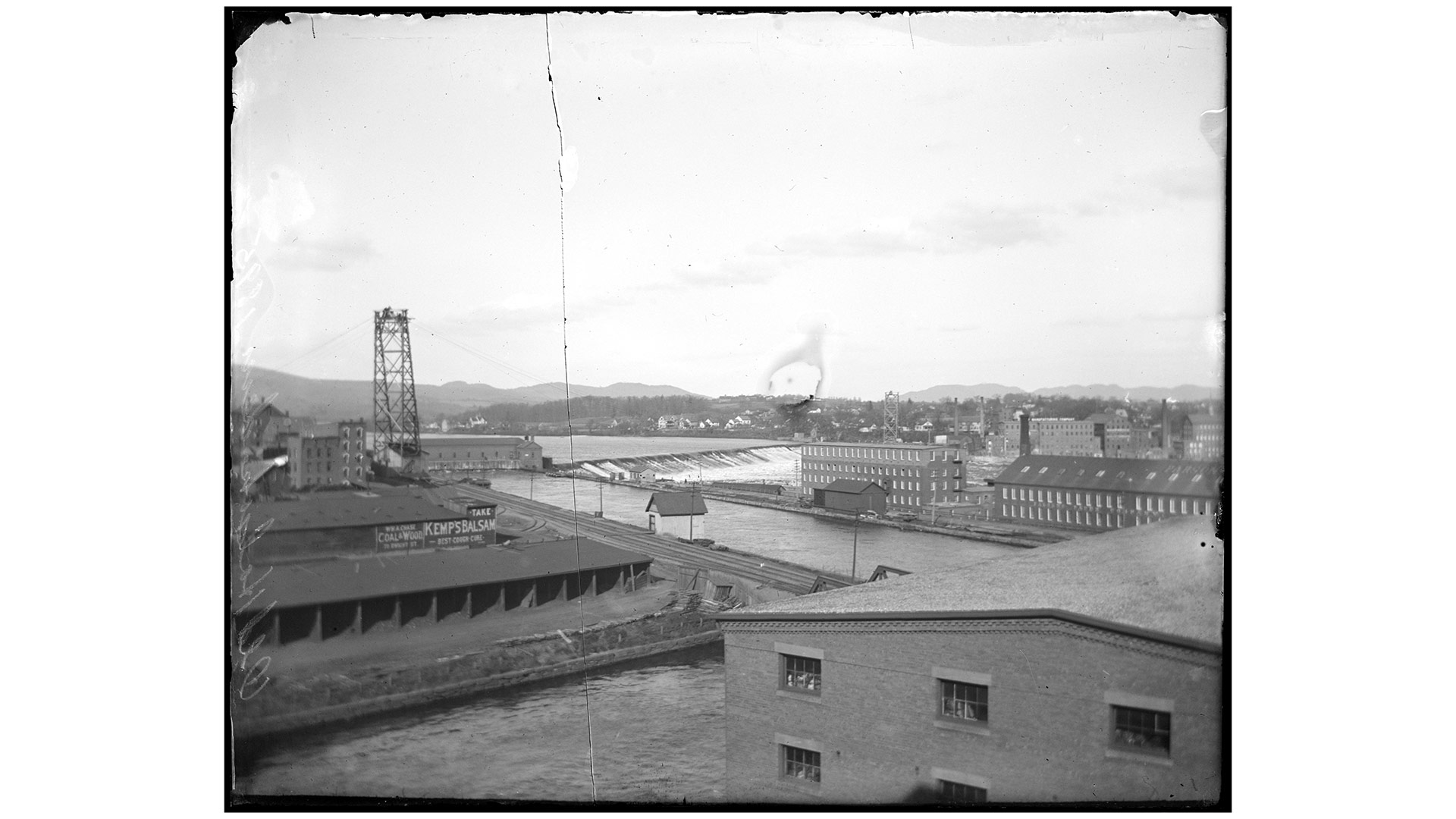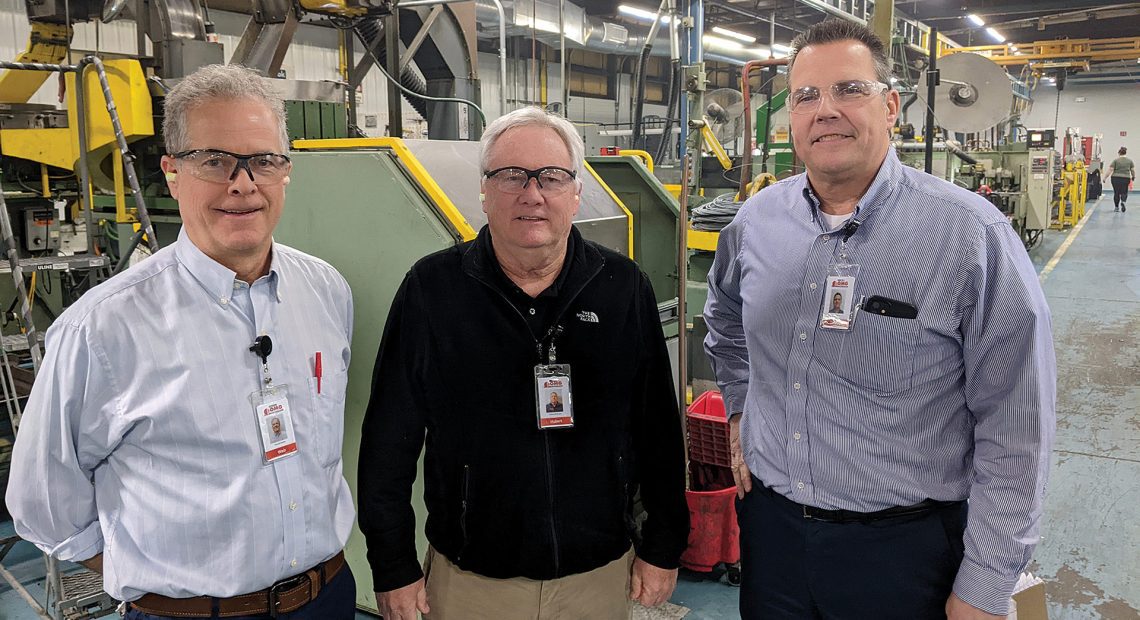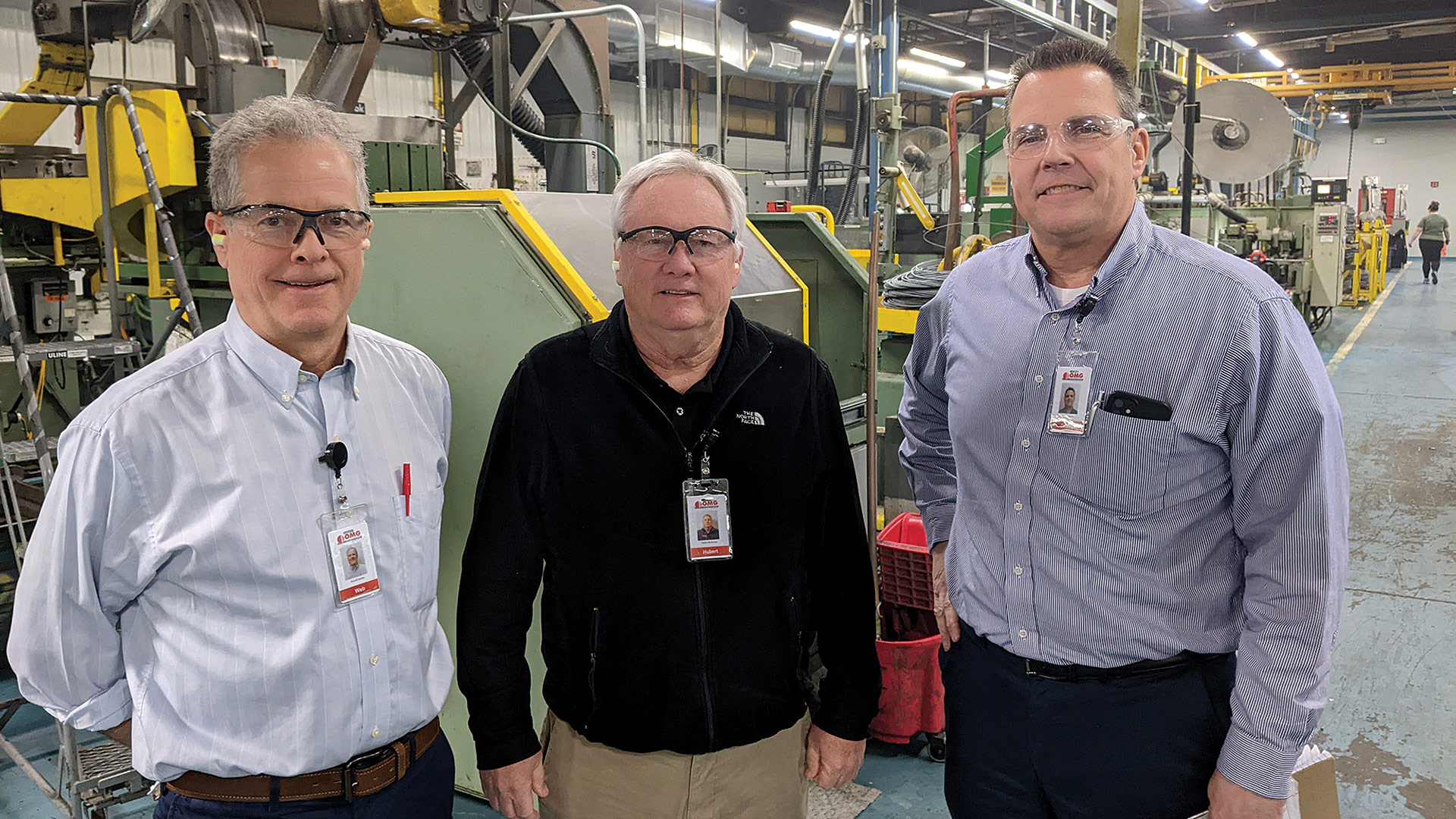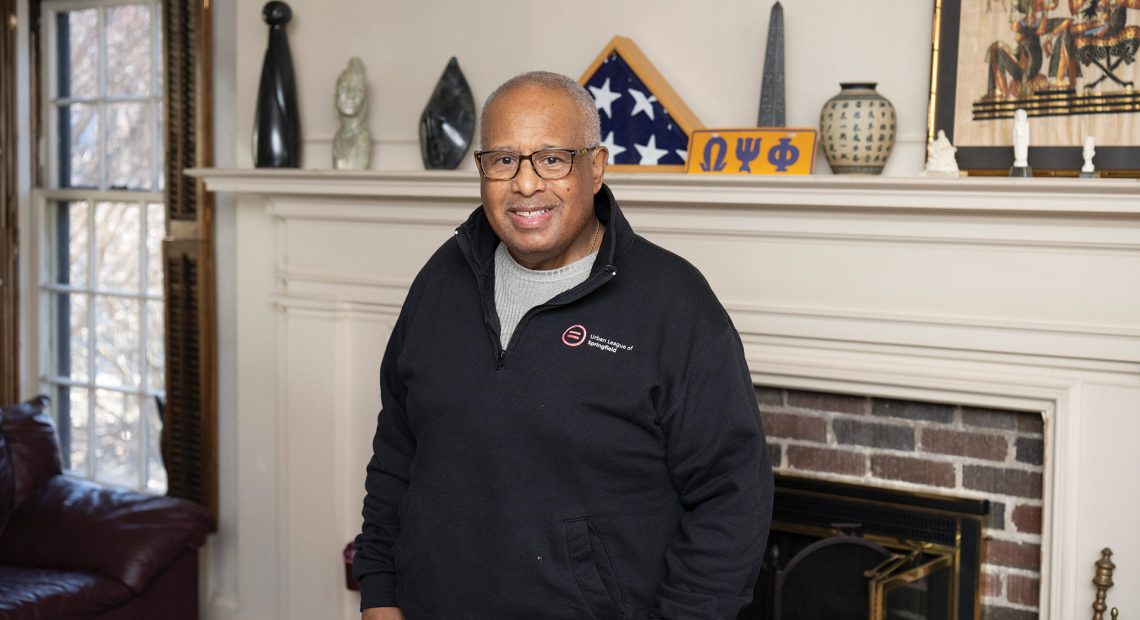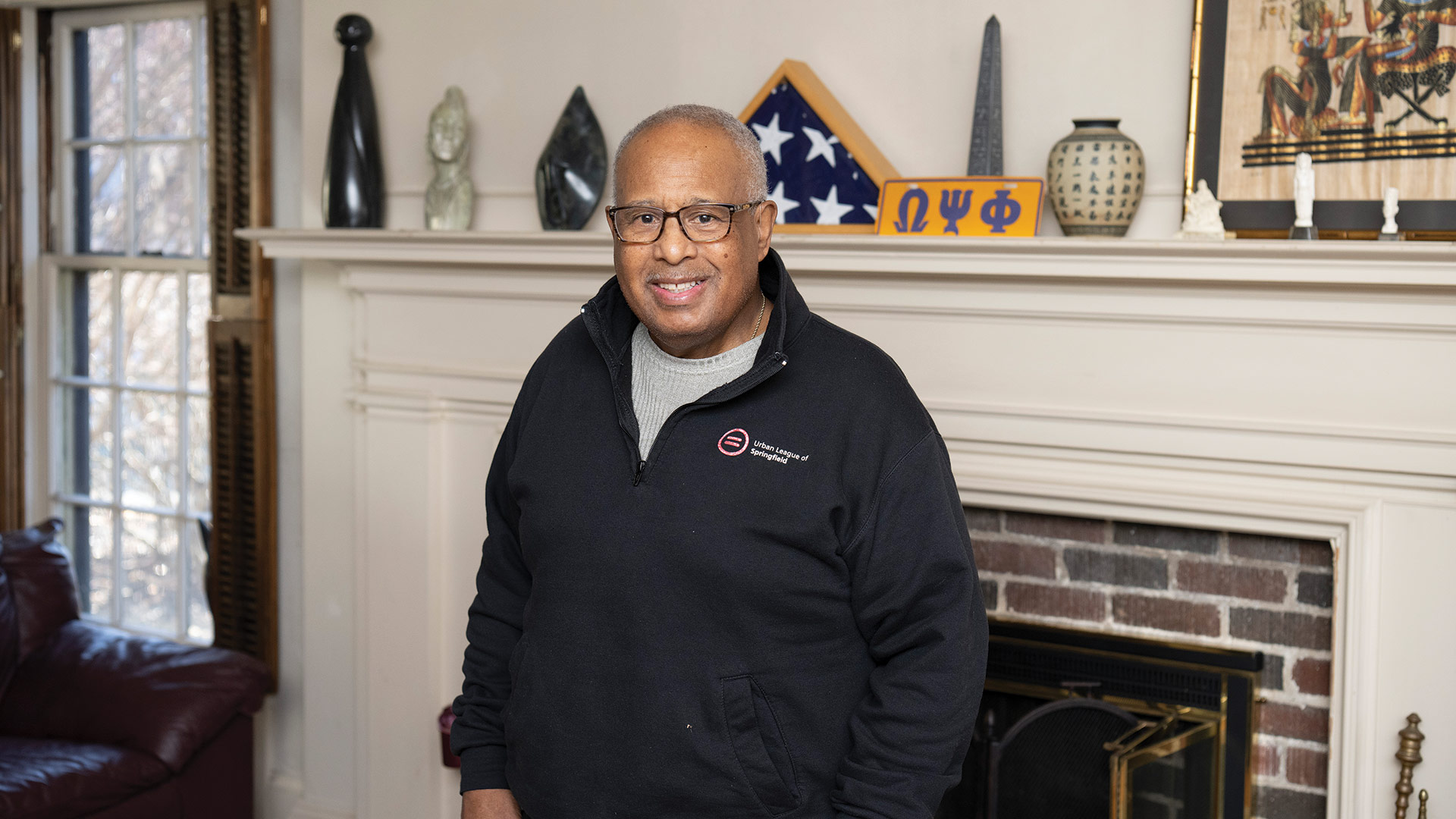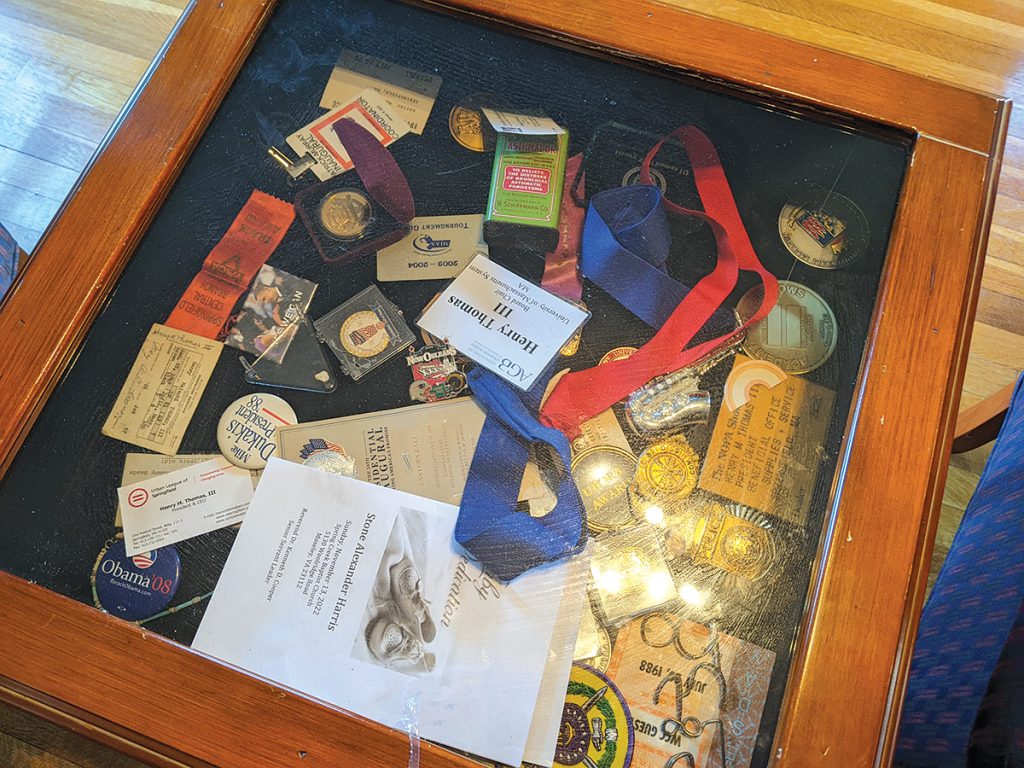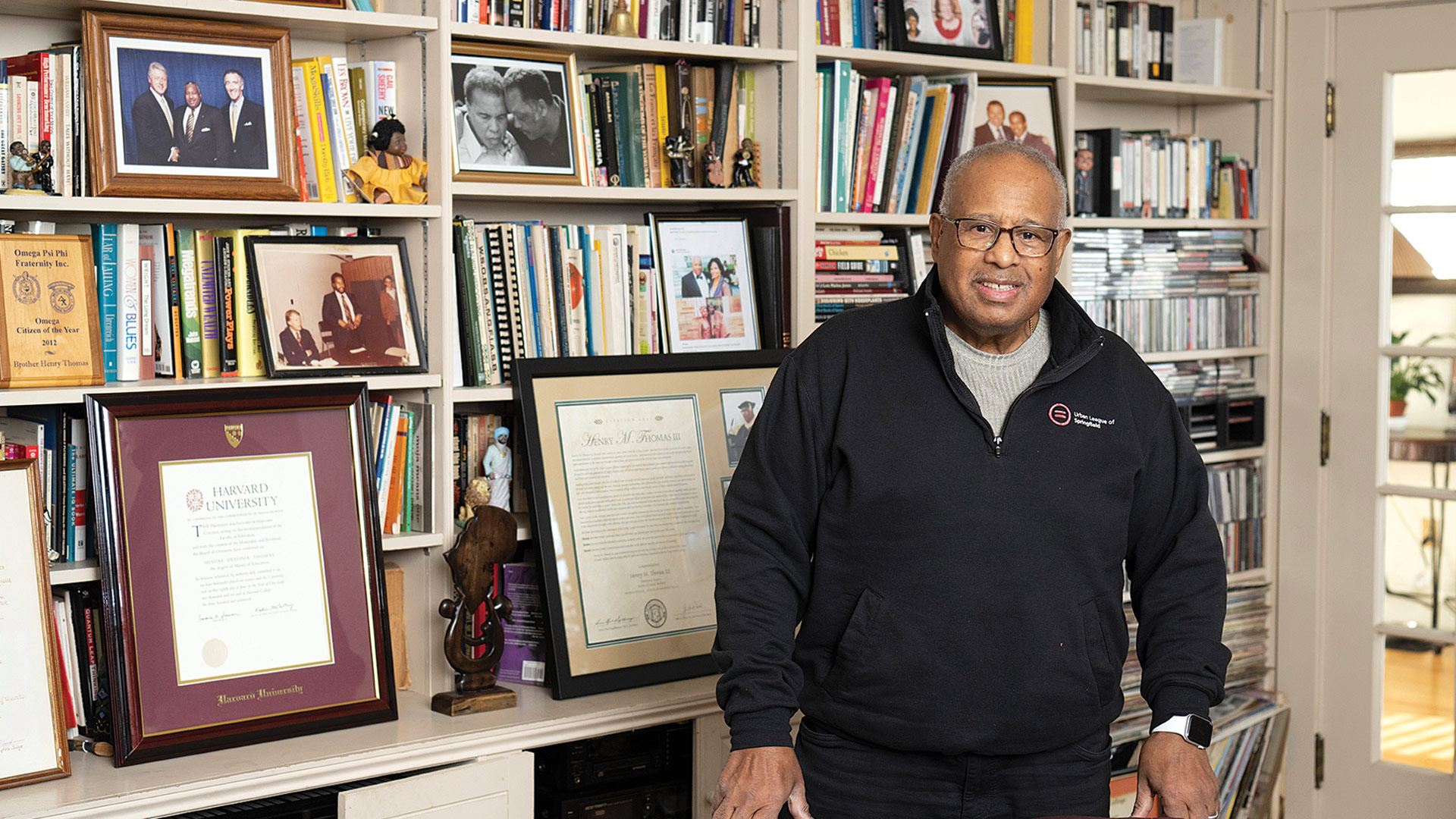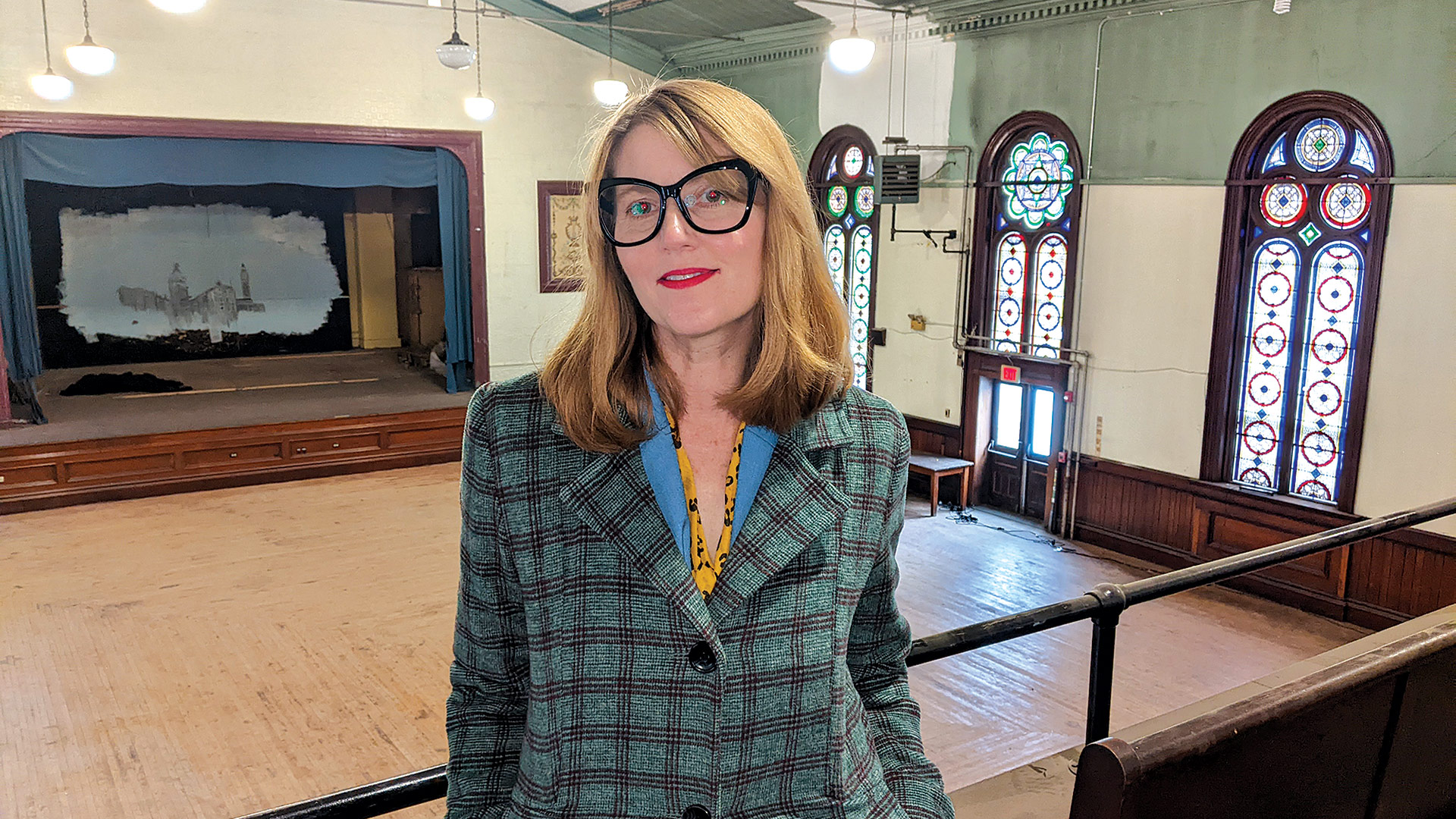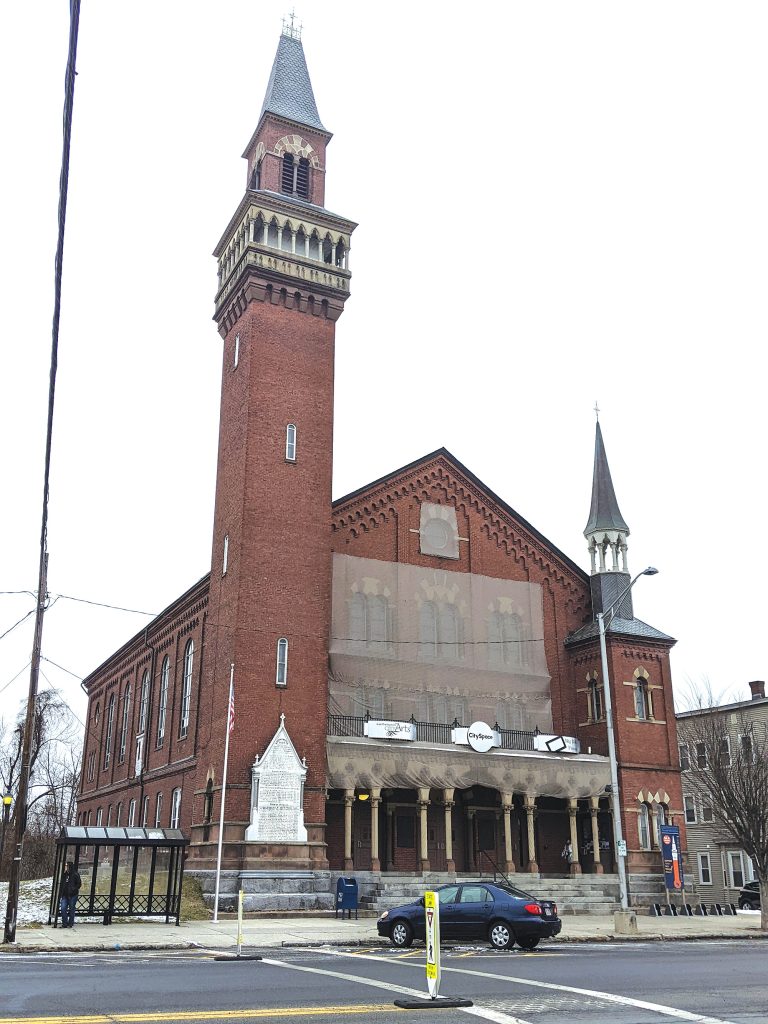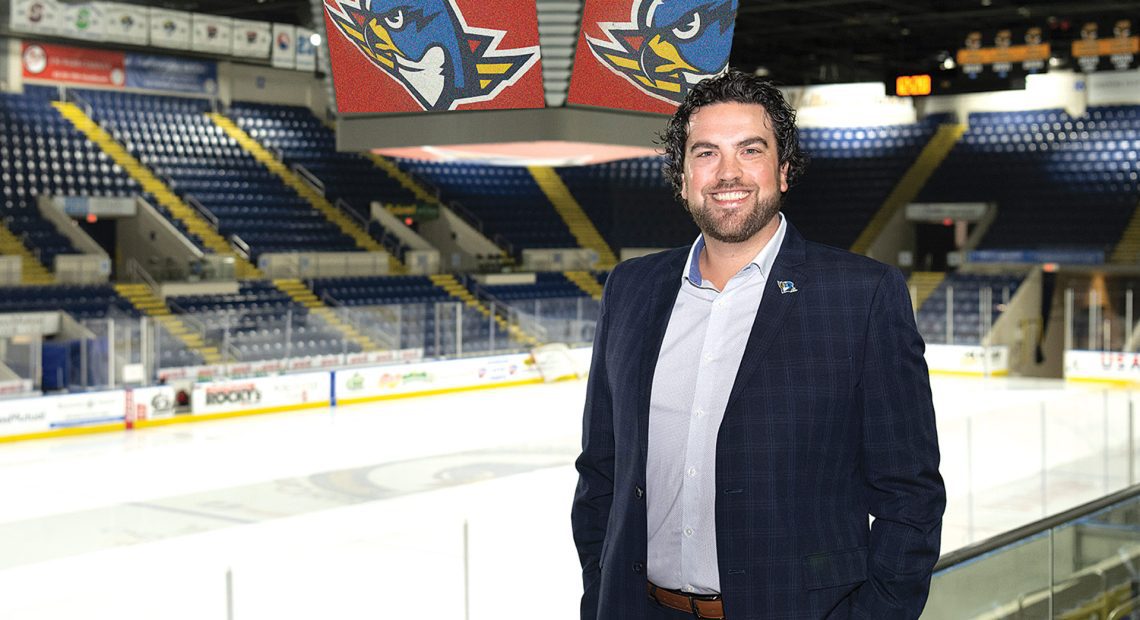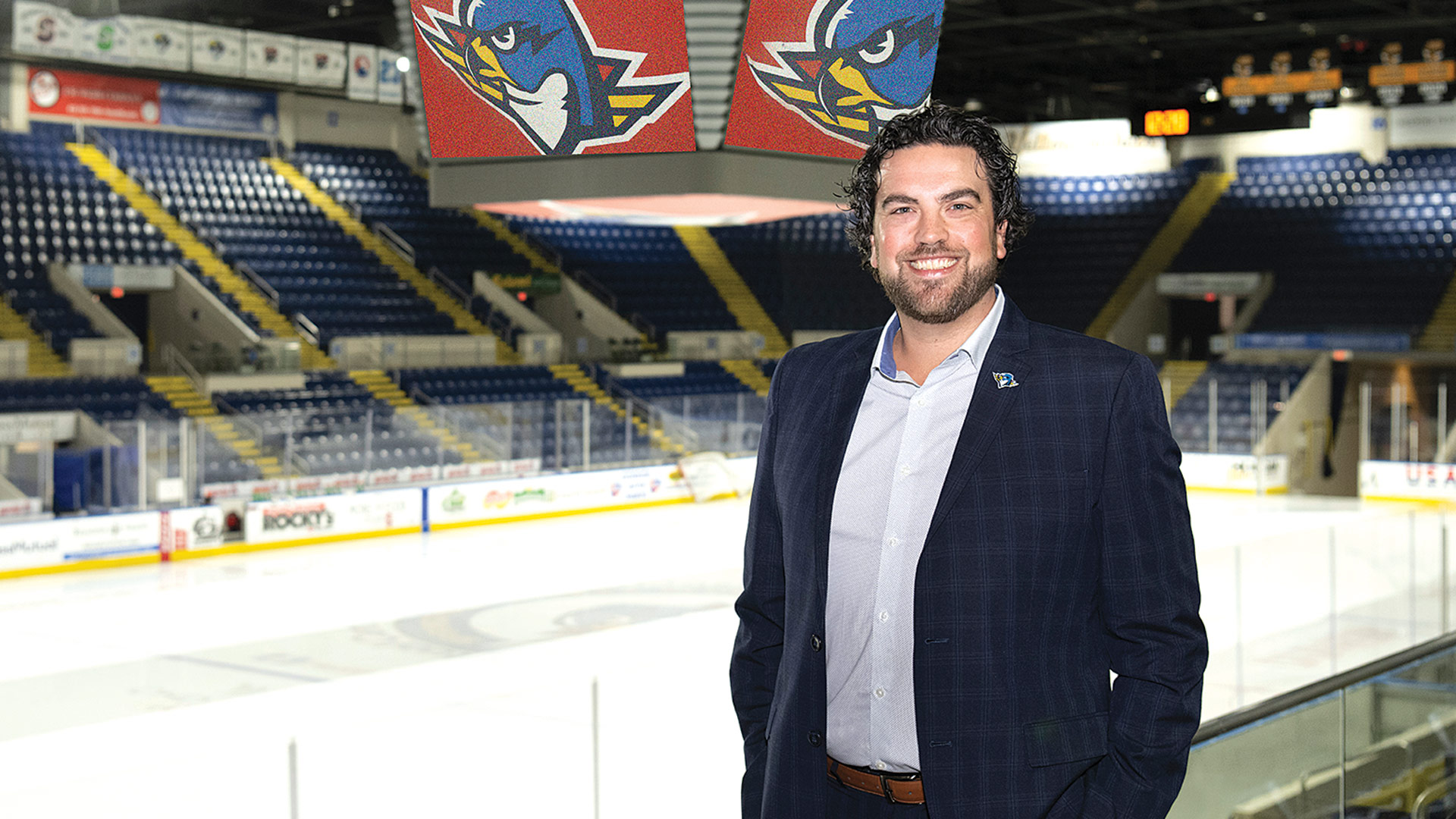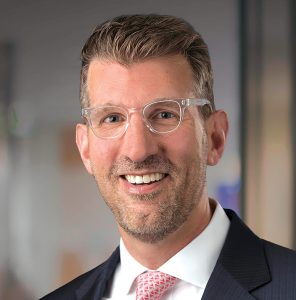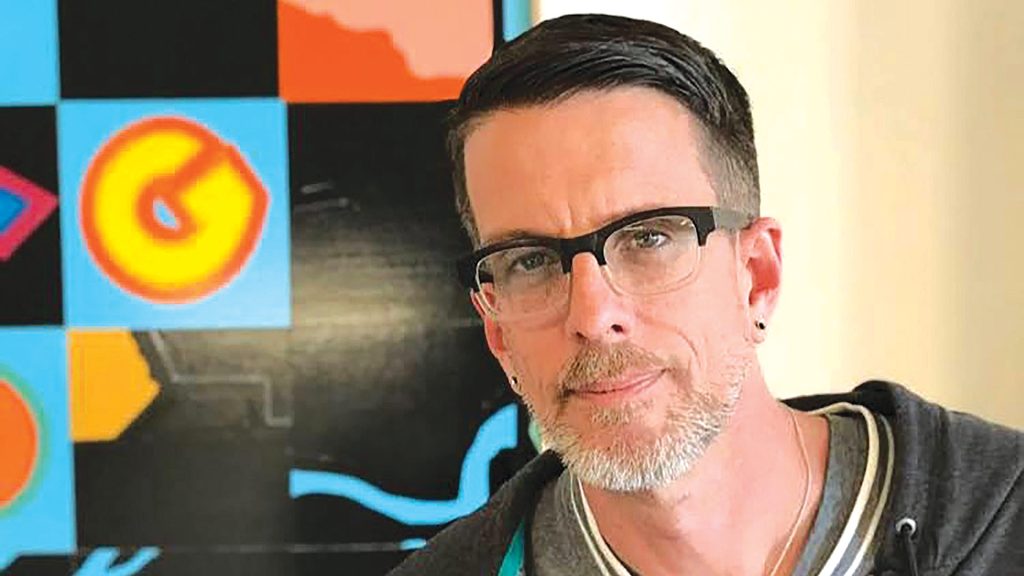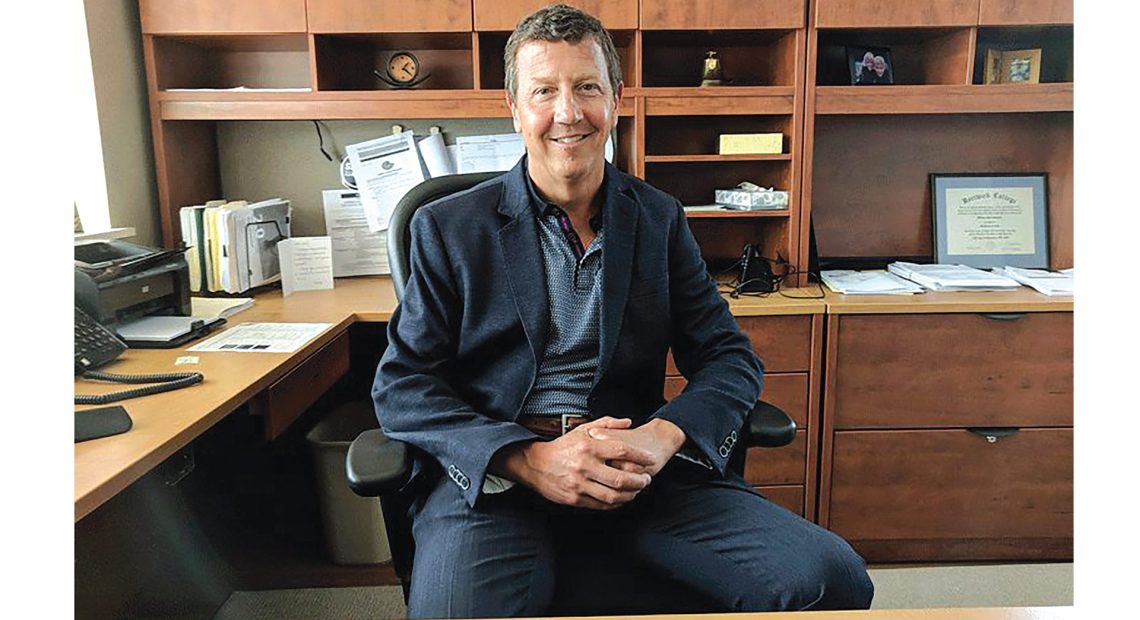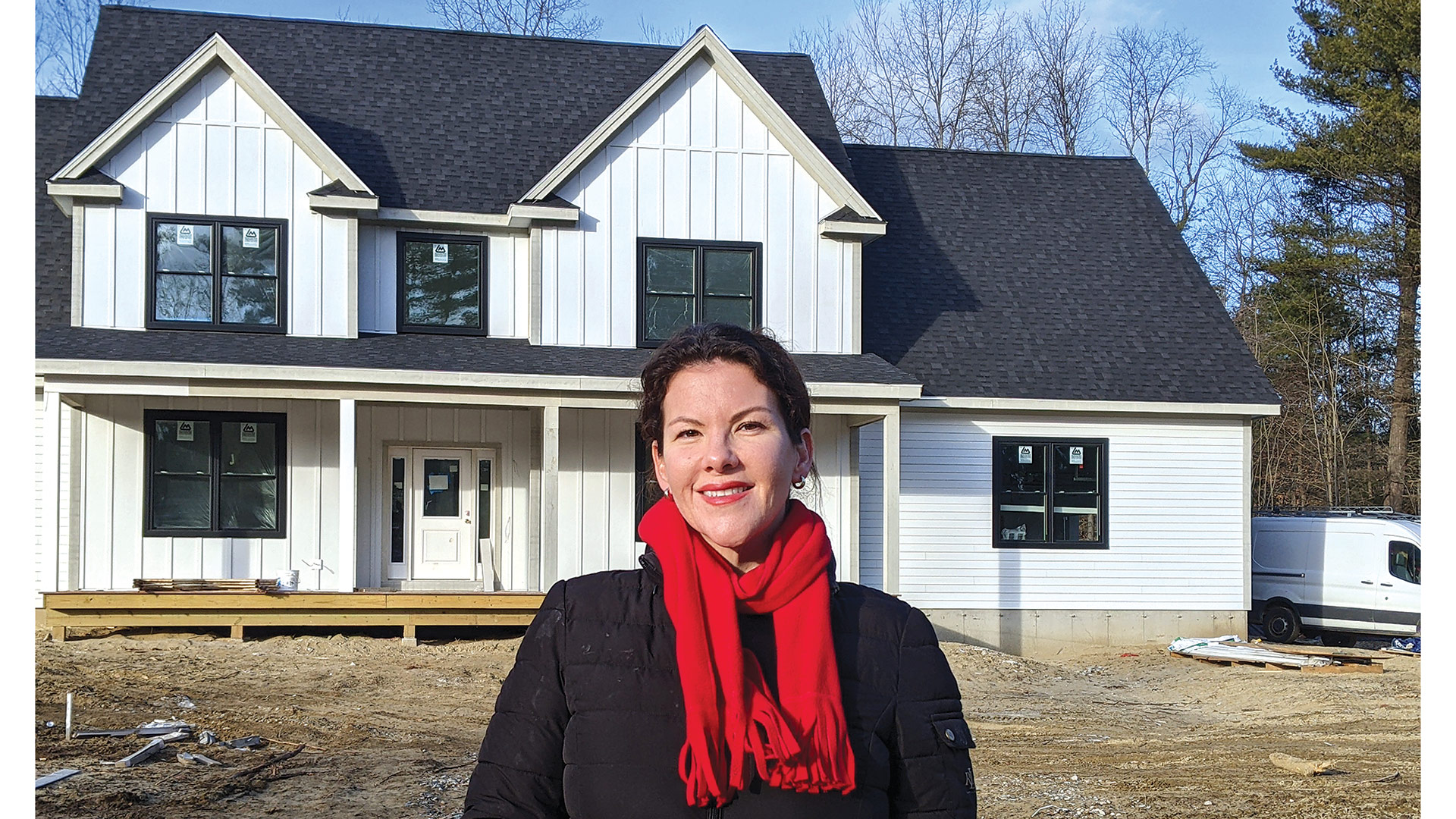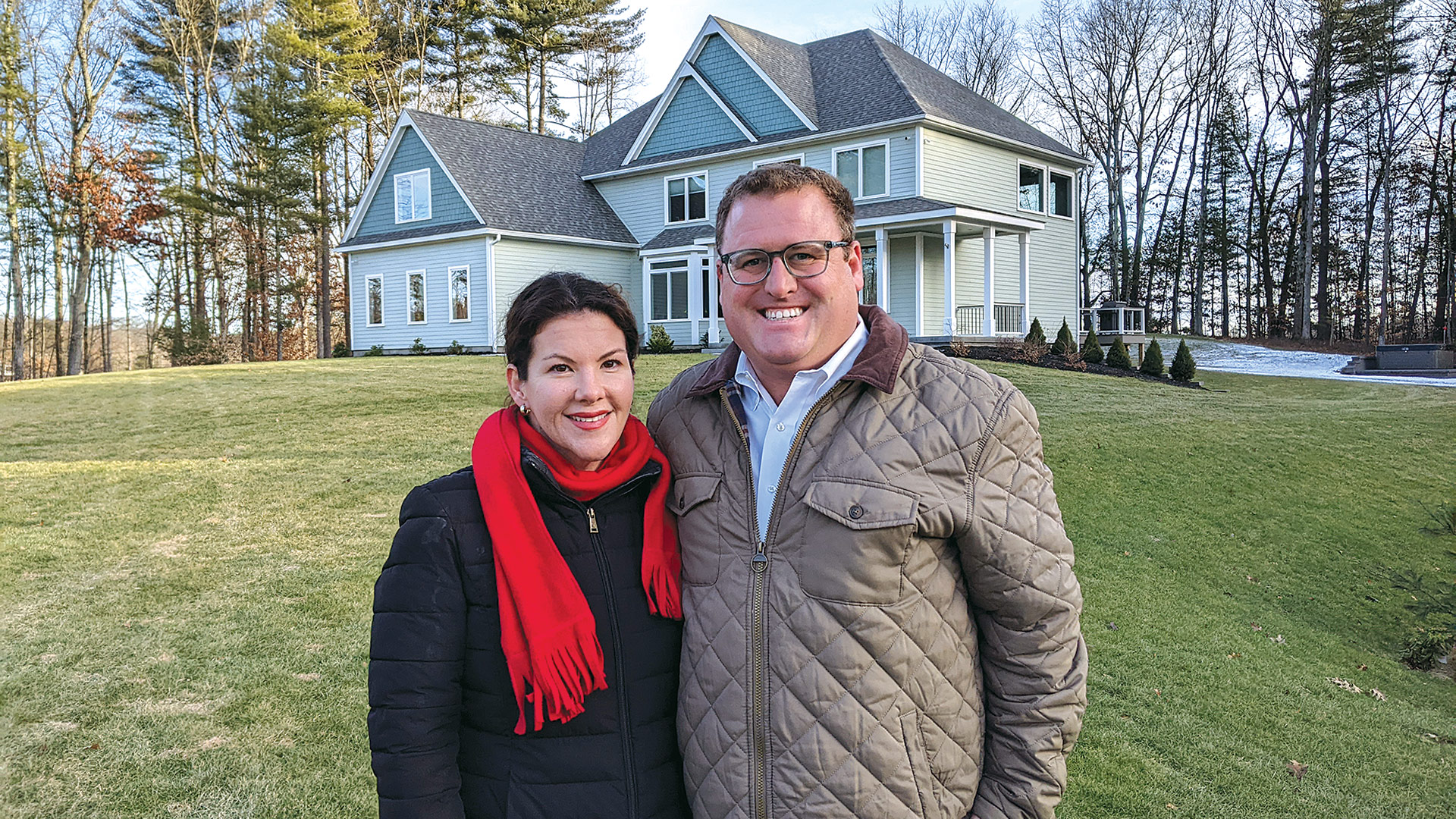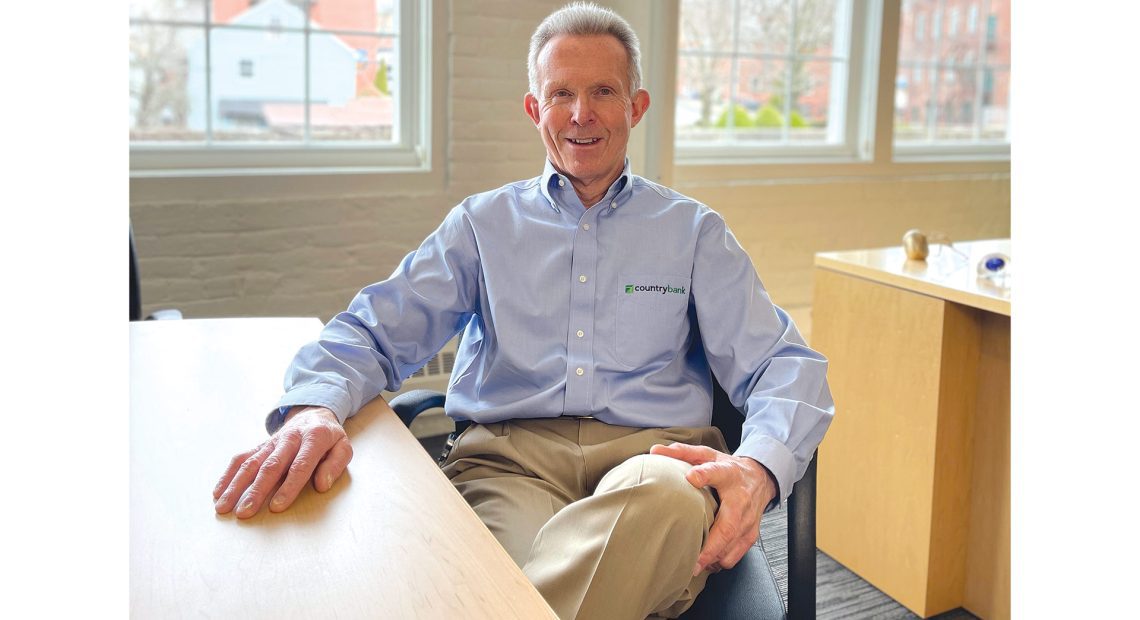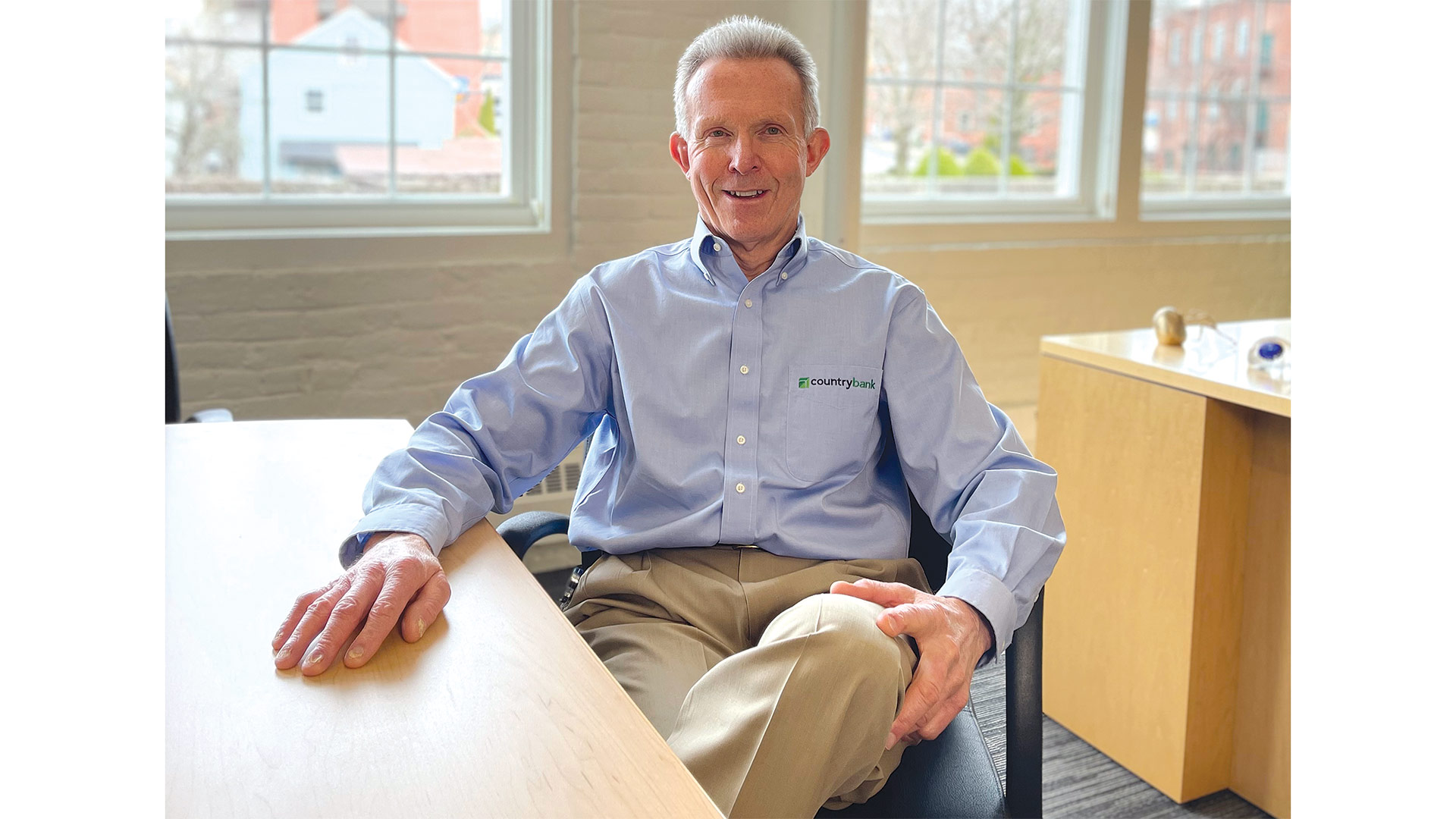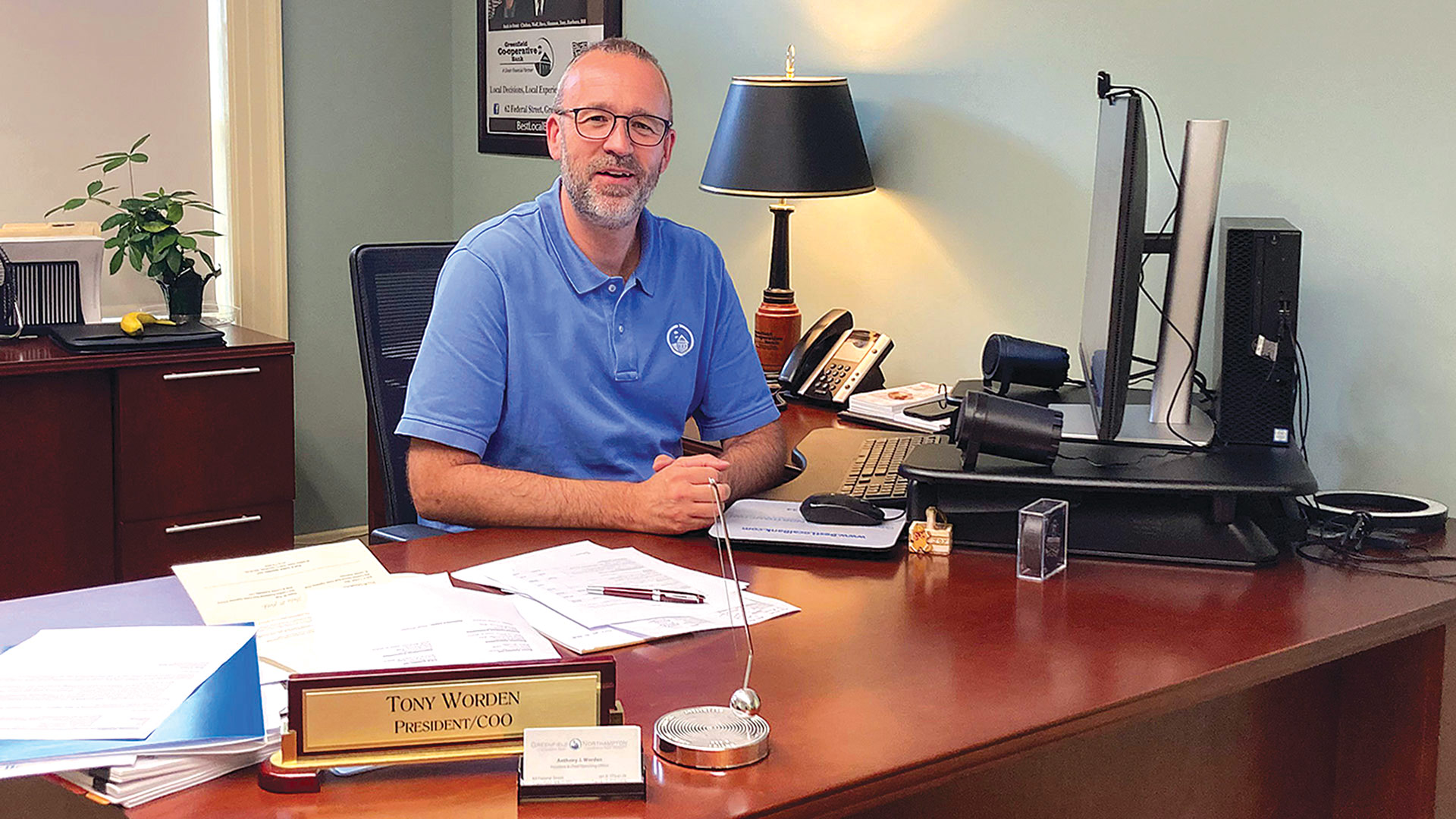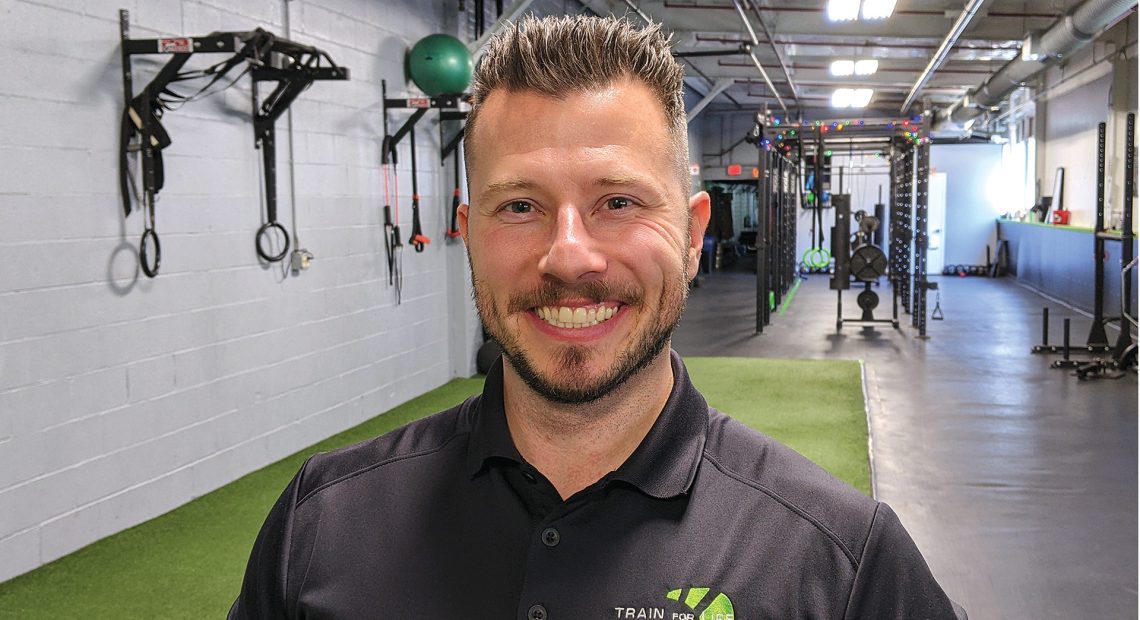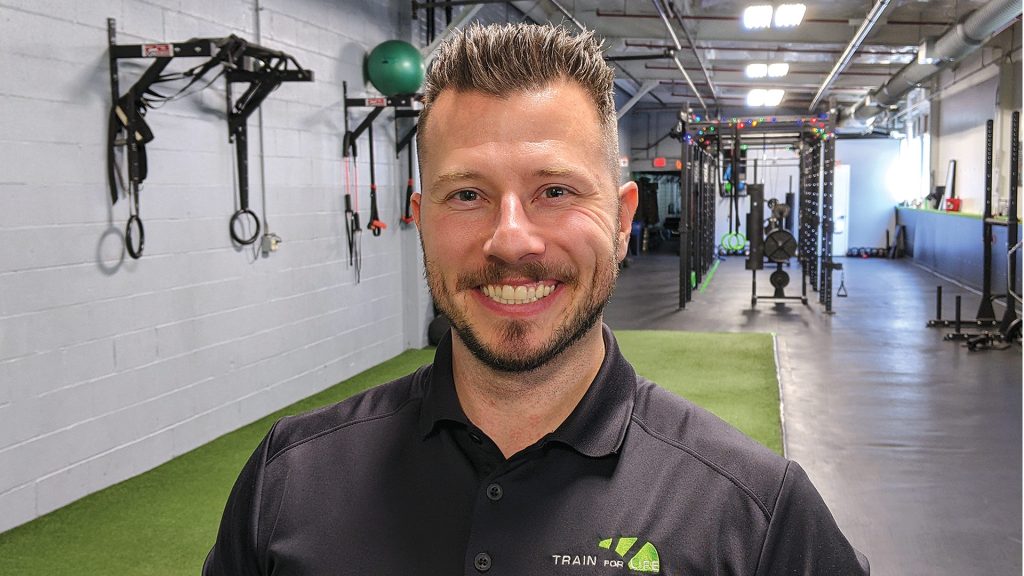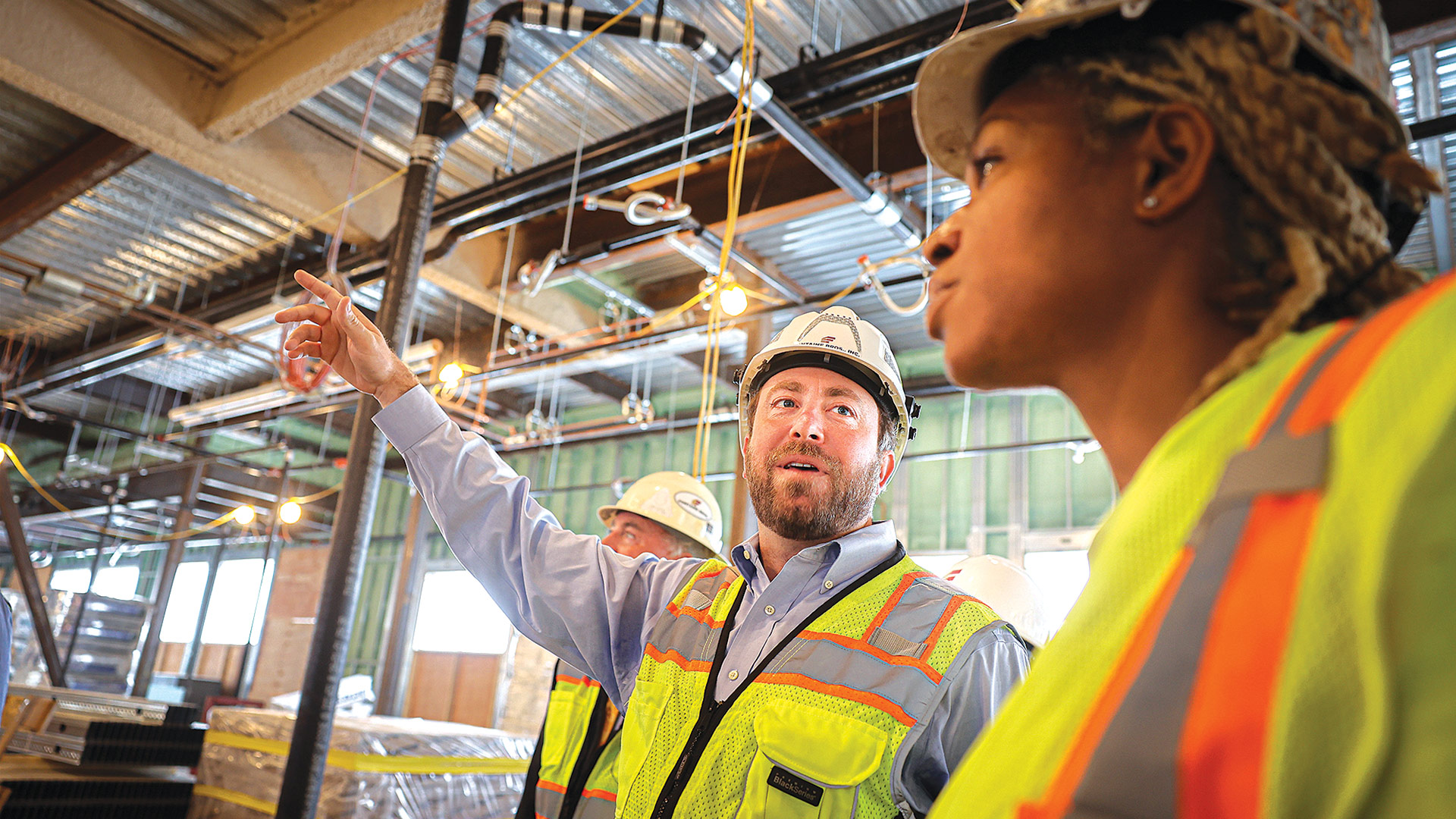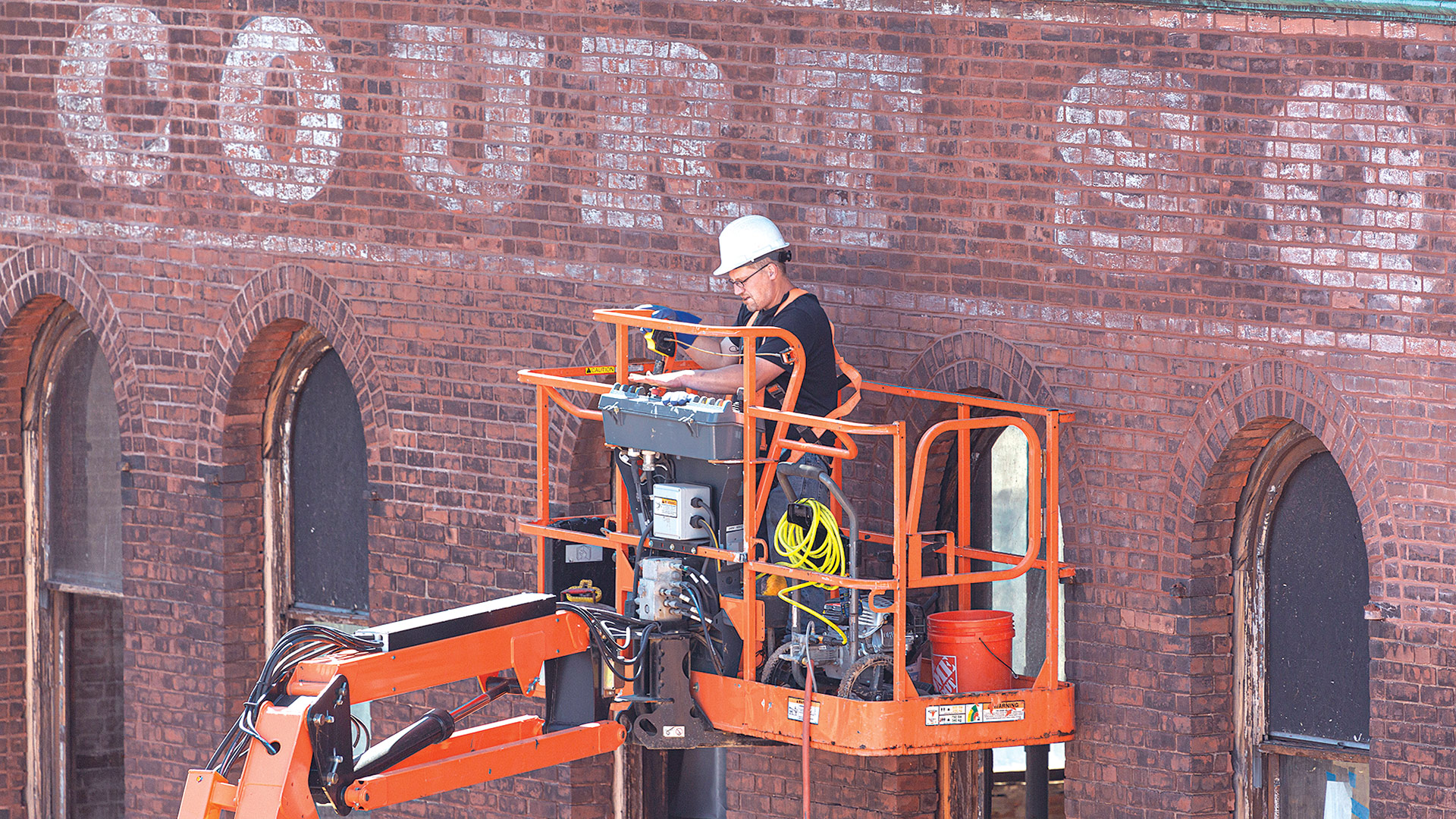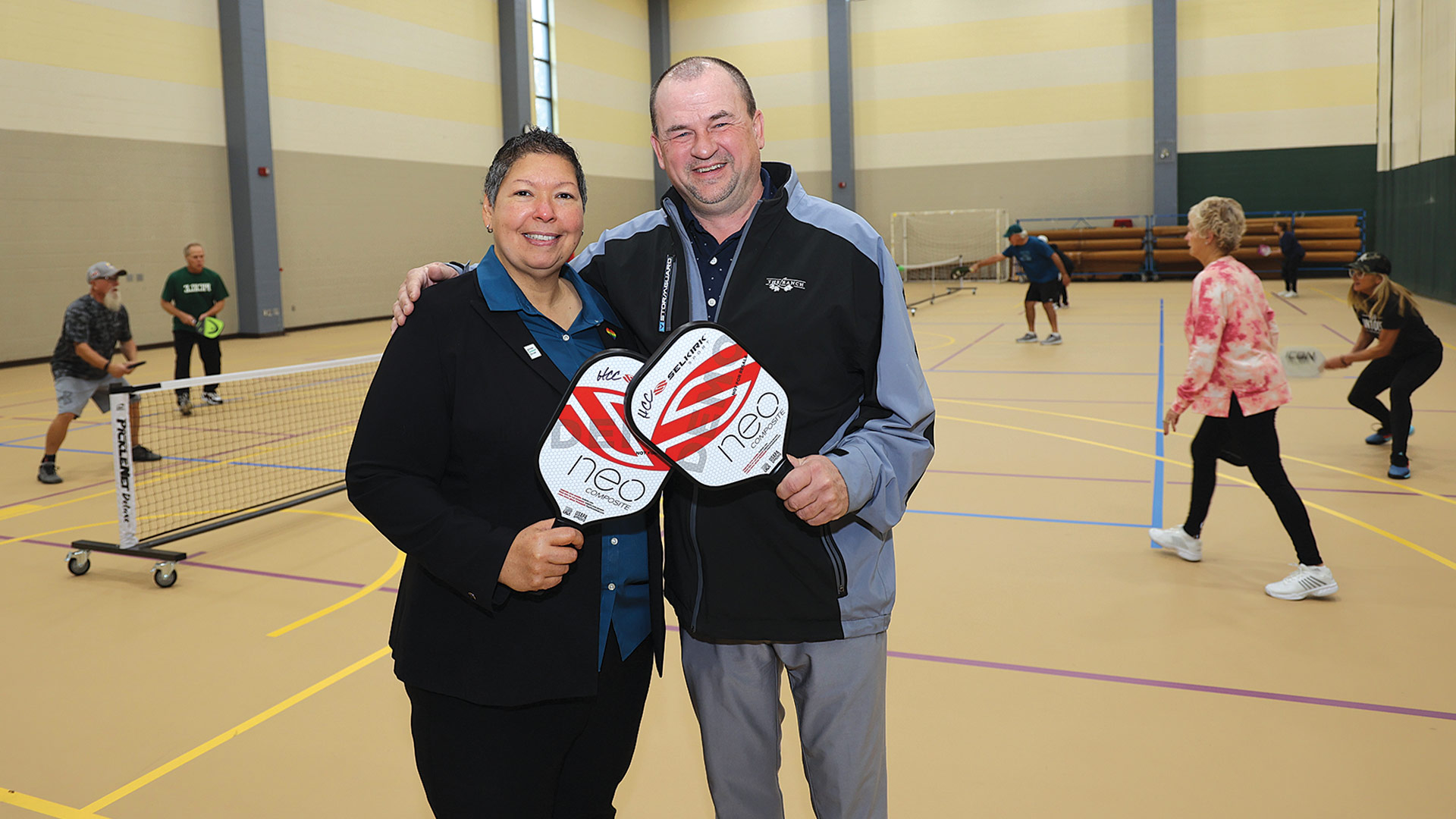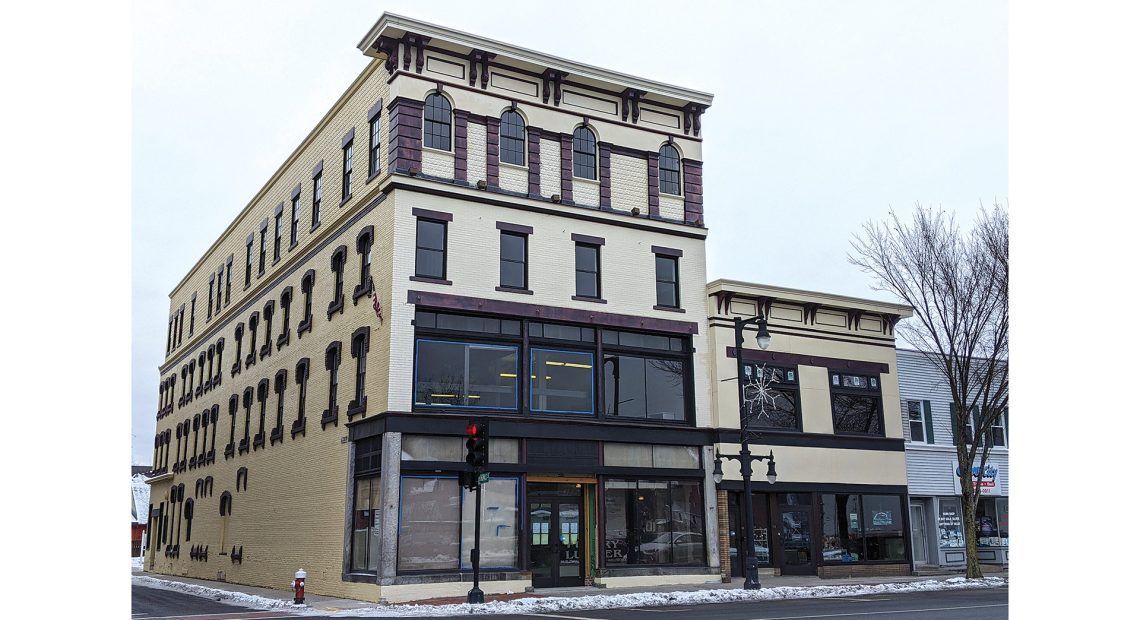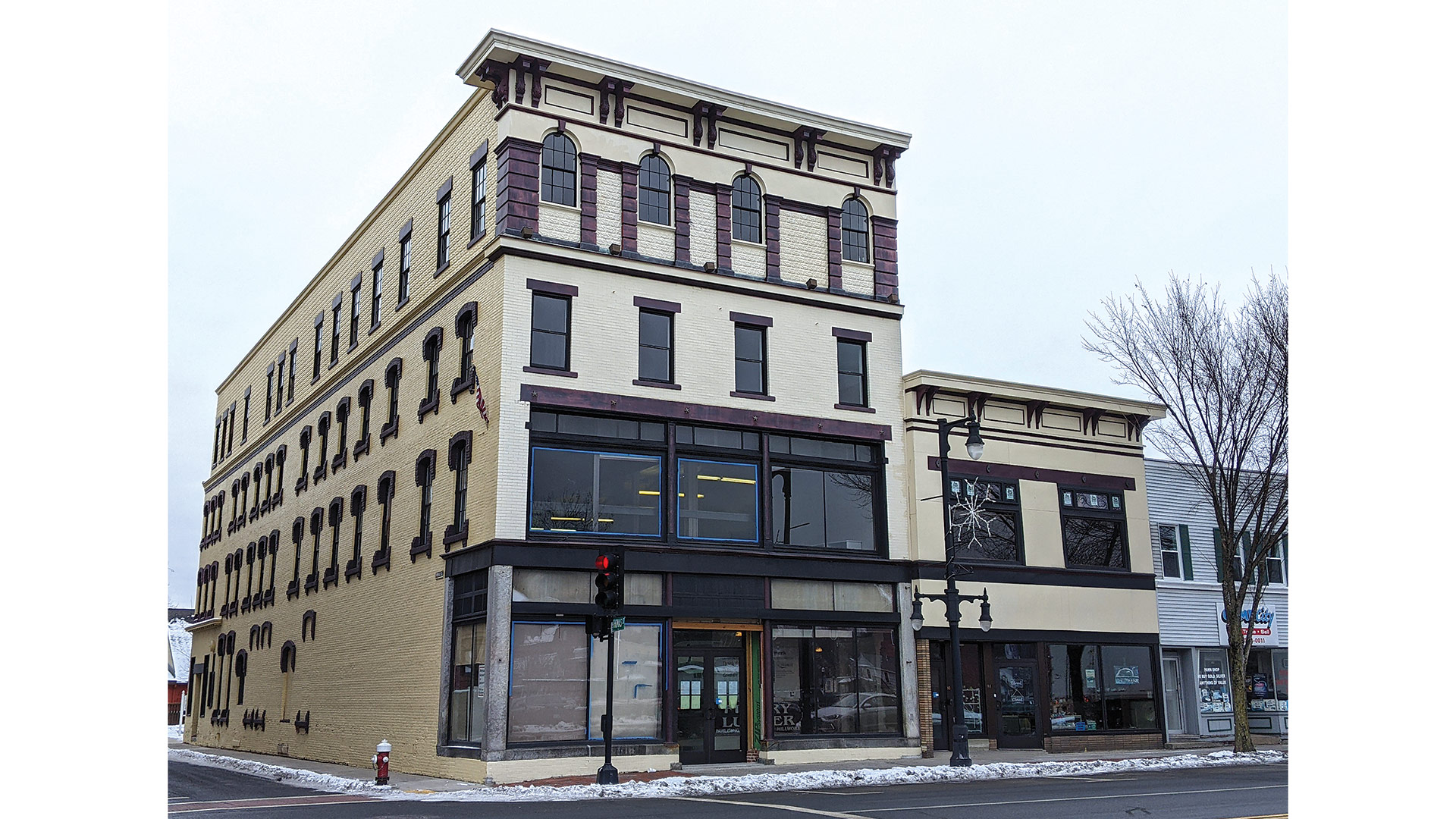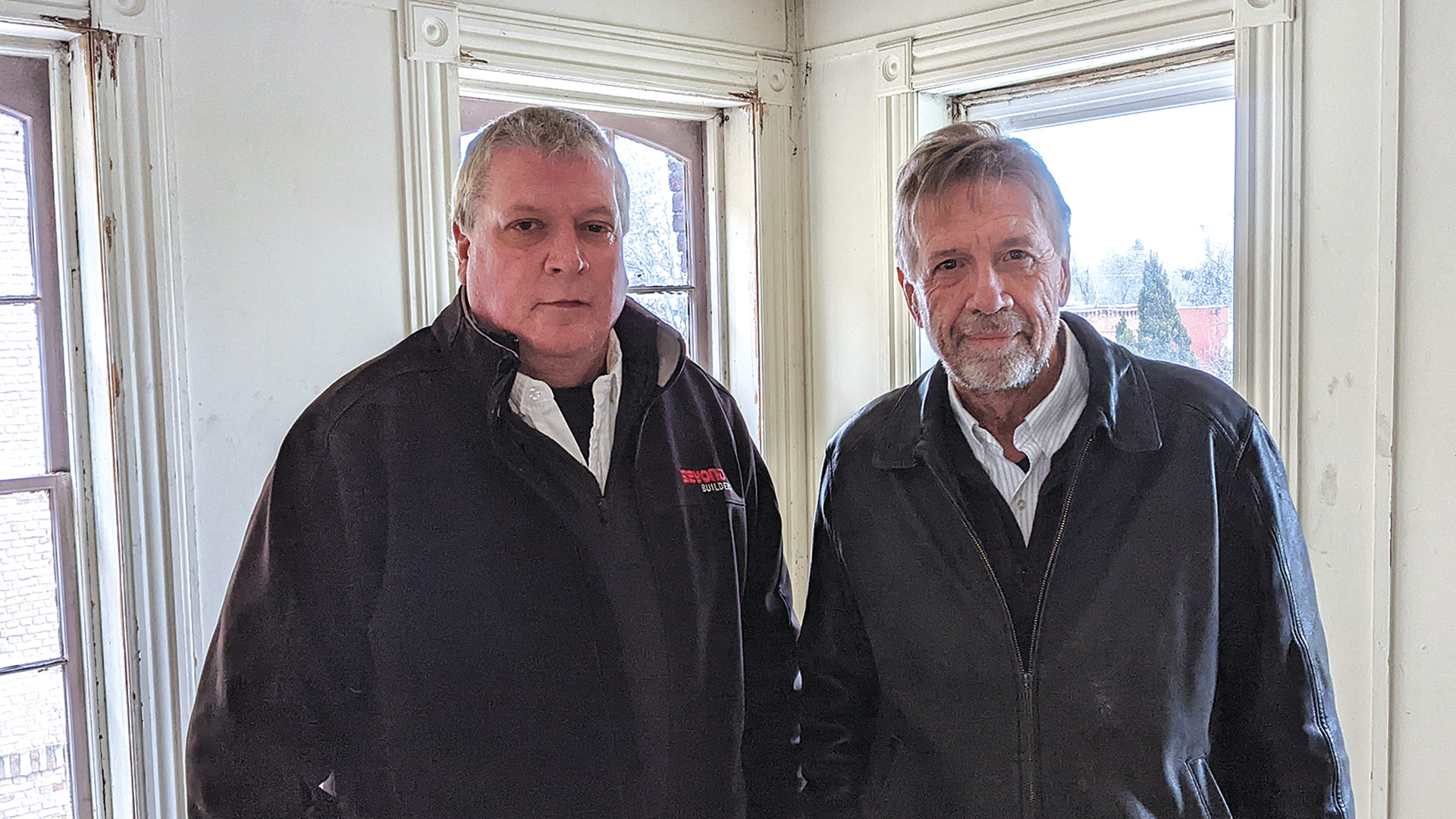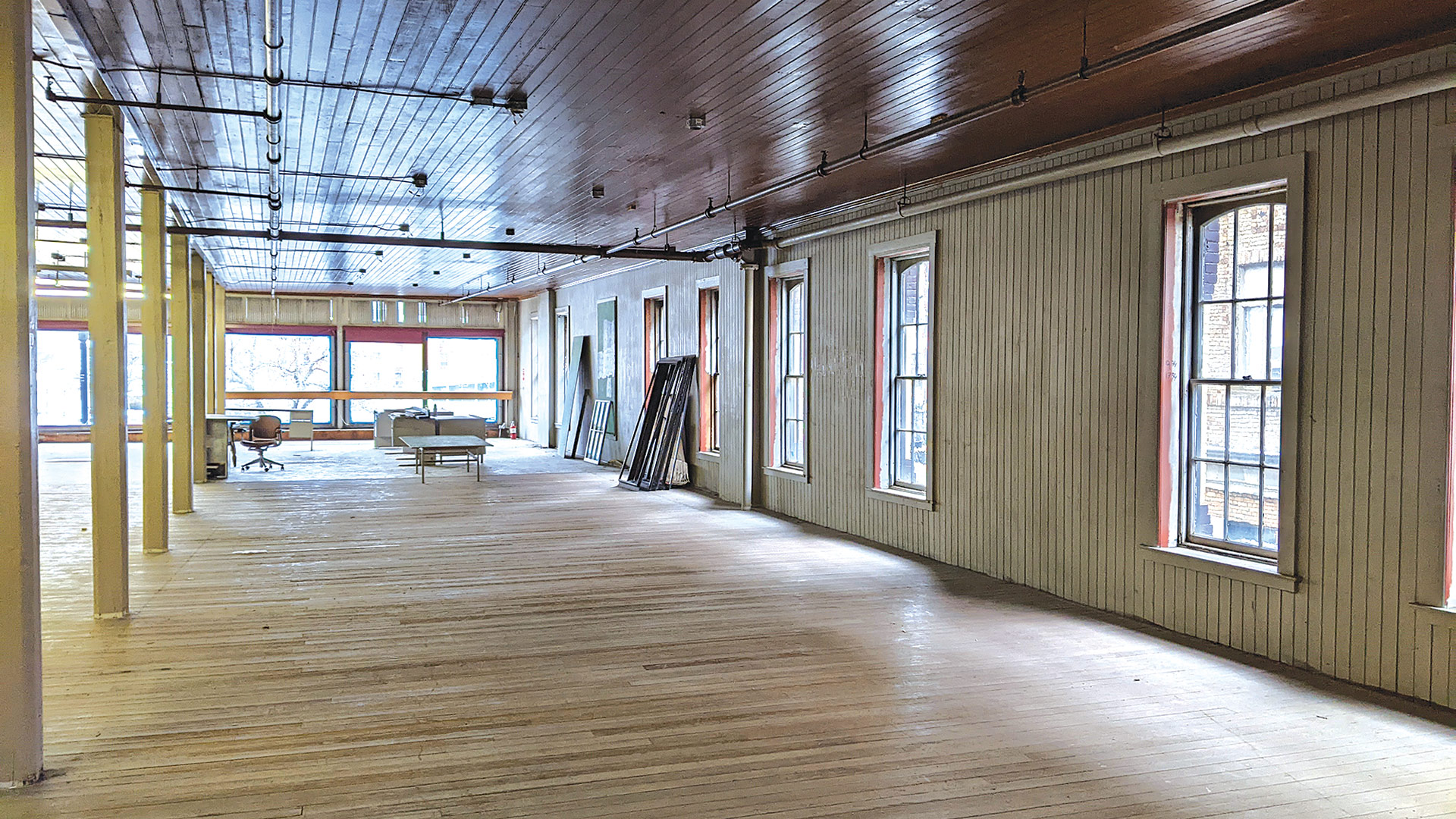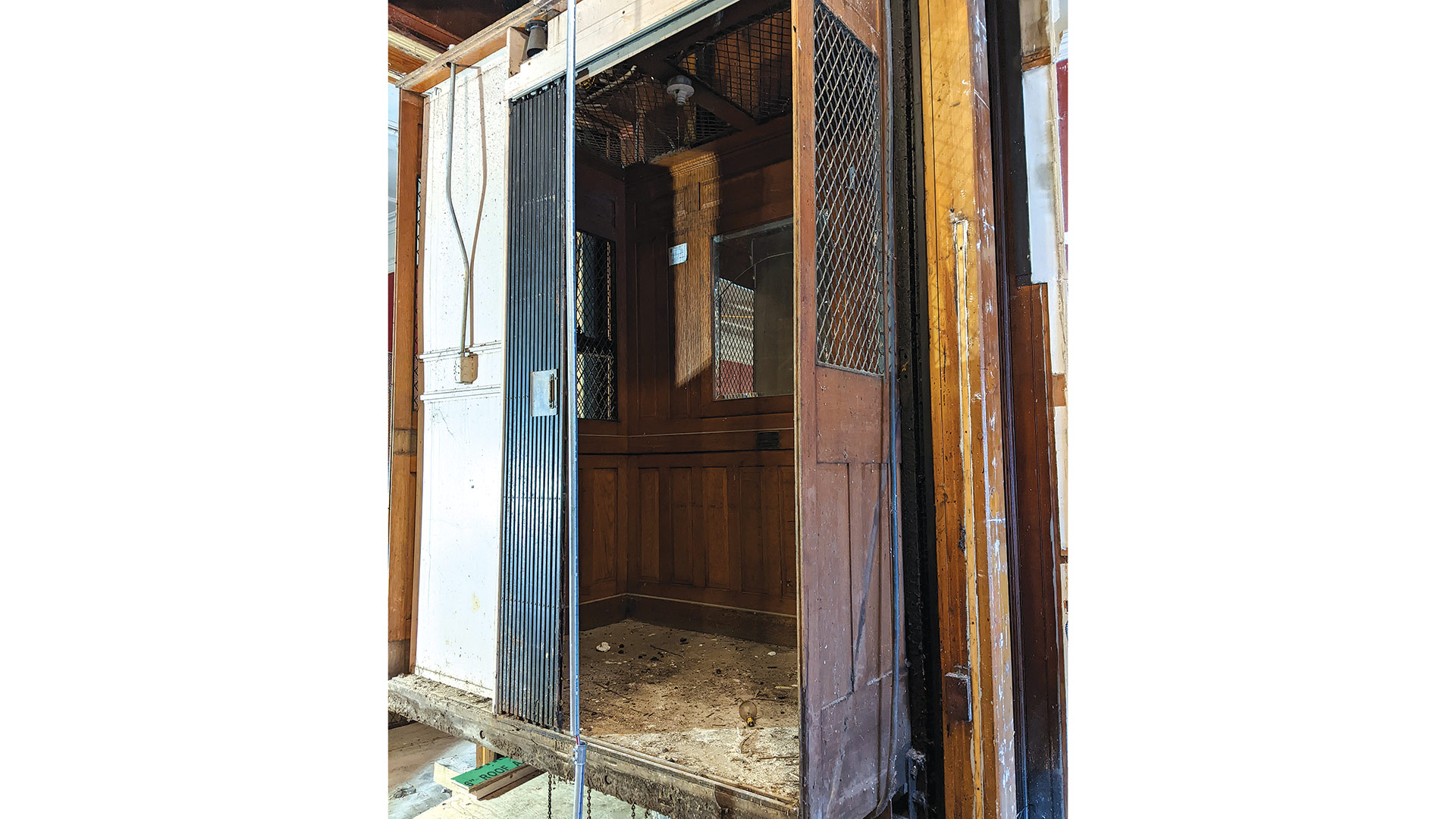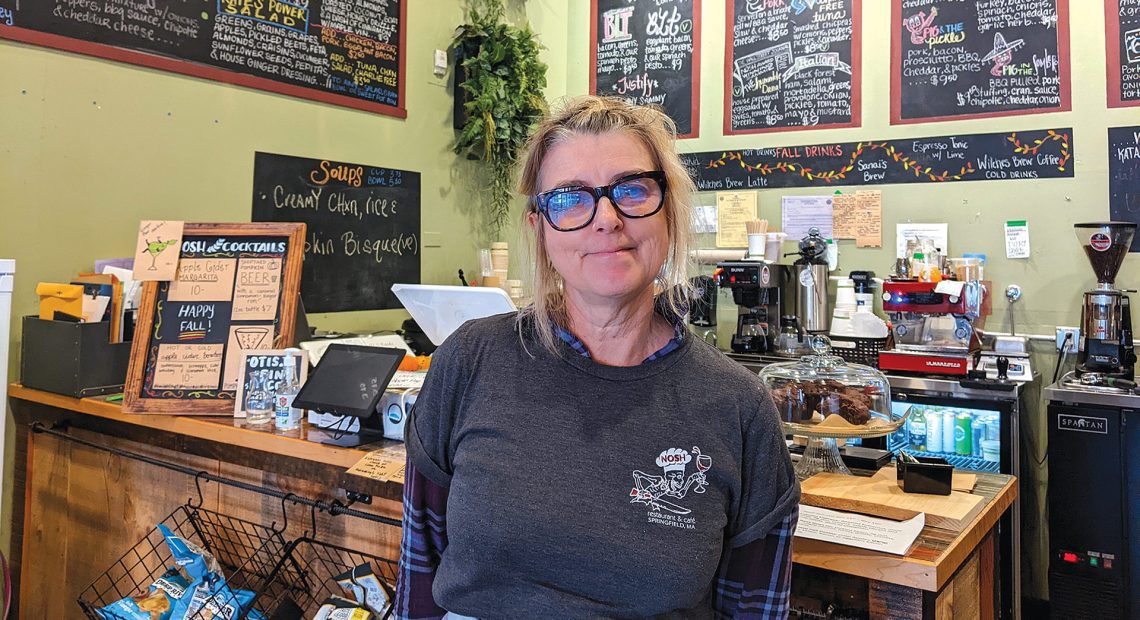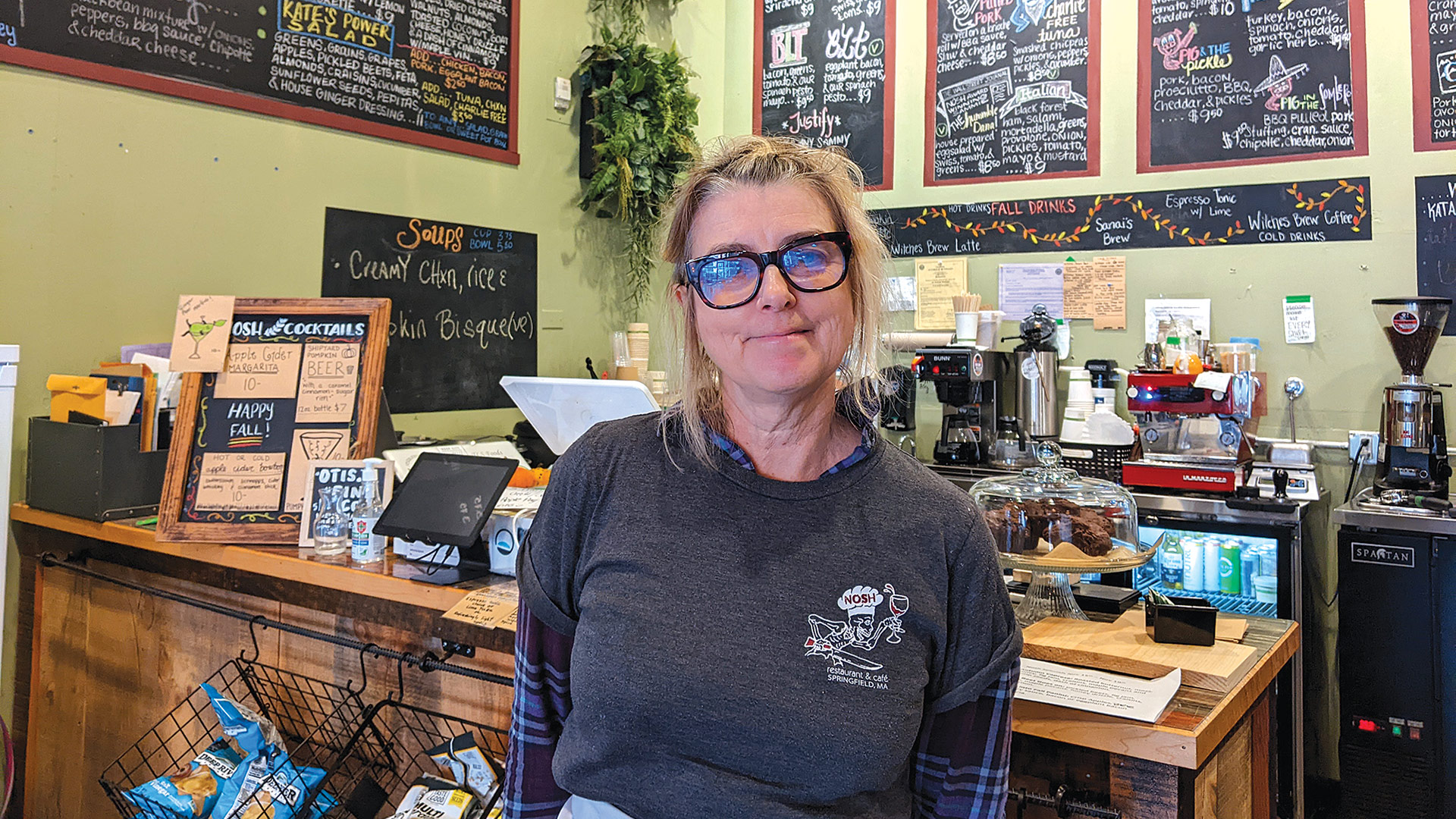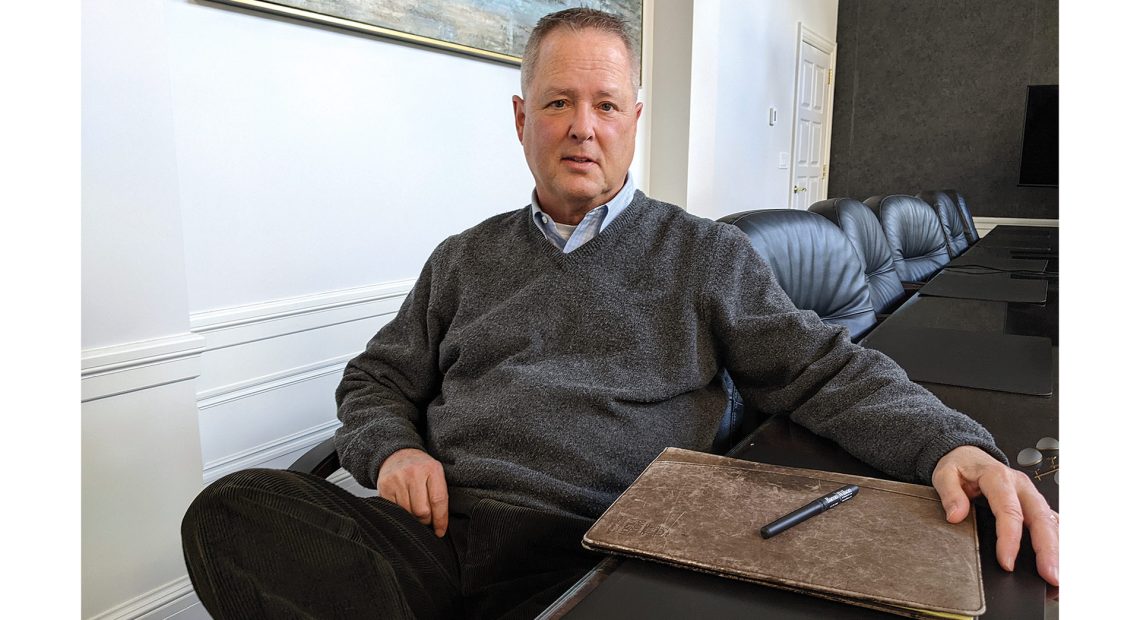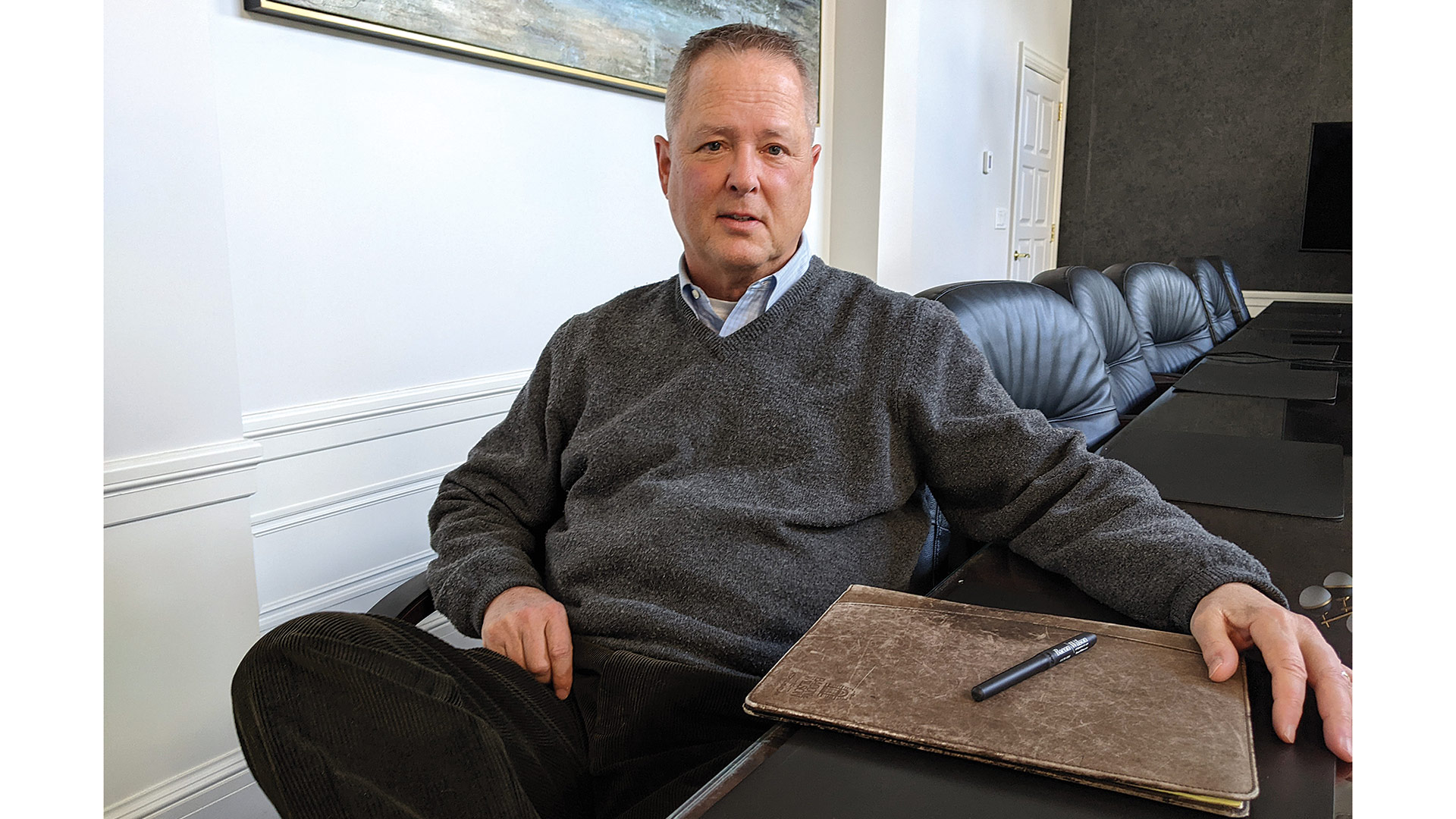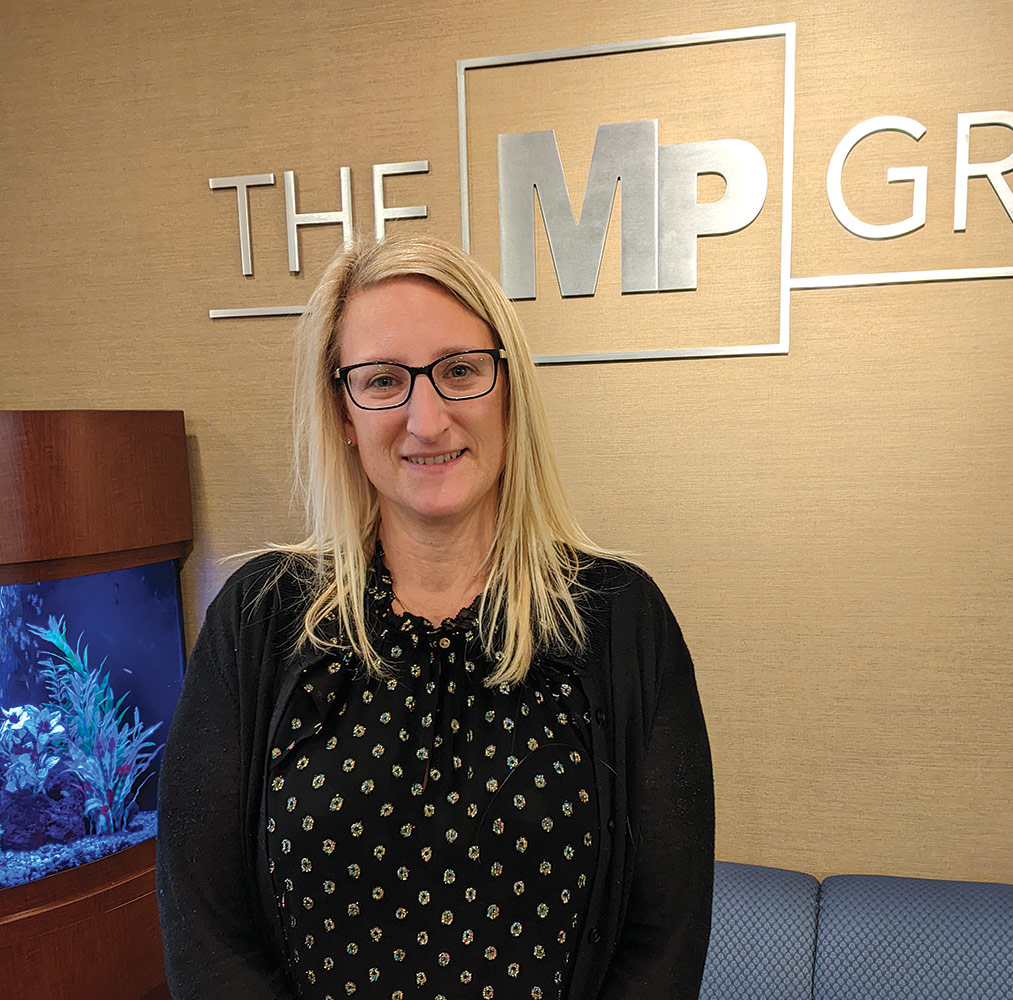Rise of the Machines

Twice a year, Tom Loper participates in a Cybersecurity Advisory Council meeting. The last one was … different.
“I would say there was a sense of concern that I hadn’t seen before at that council because of ChatGPT and the phishing potential,” said Loper, dean of the School of Arts, Sciences and Management at Bay Path University.
He explained that people can use ChatGPT, the AI chatbot that has drawn major worldwide attention since its unveiling last fall, to input information from any website, or emails from an organization, to generate a phishing episode much more realistic, and much more likely to draw a response, than its target had ever received.
“These are people — from Facebook, from Fidelity, from the Hartford, from every major organization you can think of in our area and beyond — who were taken aback by the capabilities of ChatGPT,” Loper said.
“It really scares the hell out of all of us, because we know the biggest problem that we have in cybersecurity, the biggest challenge, comes between the brain and the keyboard. Human beings allow people in.”
“It really scares the hell out of all of us, because we know the biggest problem that we have in cybersecurity, the biggest challenge, comes between the brain and the keyboard,” he explained. “Human beings allow people in. The systems are very good at stopping people from breaching — flags go off, bells and whistles go off. But the biggest problem we have is the human intervention that has to take place. And human beings make mistakes. Especially when we’re connected to the outside world, we make mistakes that allow phishing to take place.”

Tom Loper says ChatGPT is already making work easier for students and professionals, but that raises issues ranging from plagiarism to how jobs might change.
And ChatGPT just made that challenge even more daunting.
But the impact of this and other AI tools extend far beyond cyberthreats.
“AI has the ability to be as impactful as the internet — possibly even as impactful as electricity — on the way business is conducted,” said Delcie Bean, president and CEO of Paragus Strategic IT in Hadley. “We all knew this day was coming for a long time, but now it’s here, and by the end of this decade, the only businesses that will still be in business are the ones that embrace the change.”
Bean explained that these tools allow enormous amounts of work previously done by humans to be completely automated, often in a fraction of the time and with much greater accuracy — and not just basic administrative work.
“We are also talking about highly complex work like computer coding, law, and even practicing medicine,” Bean related. “In a recent demonstration, AI correctly diagnosed 225 cancer cases within 18 minutes and at 85% accuracy, while human doctors took 50 minutes and only achieved a 64% accuracy rate with the same cases. Between now and the end of the decade, we are going to see dozens of new companies and technologies emerging, displacing a lot of legacy processes and technologies at a rapid pace.”
What does that mean for employers, the workforce, and job opportunities in the future? No one has all the answers to that question — although ChatGPT itself took a stab at it for us — but there is broad agreement that change is coming.
“AI has the ability to be as impactful as the internet — possibly even as impactful as electricity — on the way business is conducted. We all knew this day was coming for a long time, but now it’s here, and by the end of this decade, the only businesses that will still be in business are the ones that embrace the change.”
“This really challenges all forms of expertise because it’s drawing on this incredible domain of knowledge,” said James Wilson, professor of Business at Bay Path. “Now, the accuracy of it, the citing of it, all that is not there yet. But it will come.”
Wilson recently started teaching courses in a certificate program on digital transformation, which includes discussion of the impact of AI on the workplace.
“It started as a therapy session because the students were like, ‘what’s the future going to be? What skills do I need to have? What’s going to happen?’ It’s very uncertain. We have these things called human skills … which are presumably going to differentiate us from this artificial intelligence — that is, creative thinking, inquiry, critical thinking, collaboration. You’re not going to run your business on ChatGPT.”
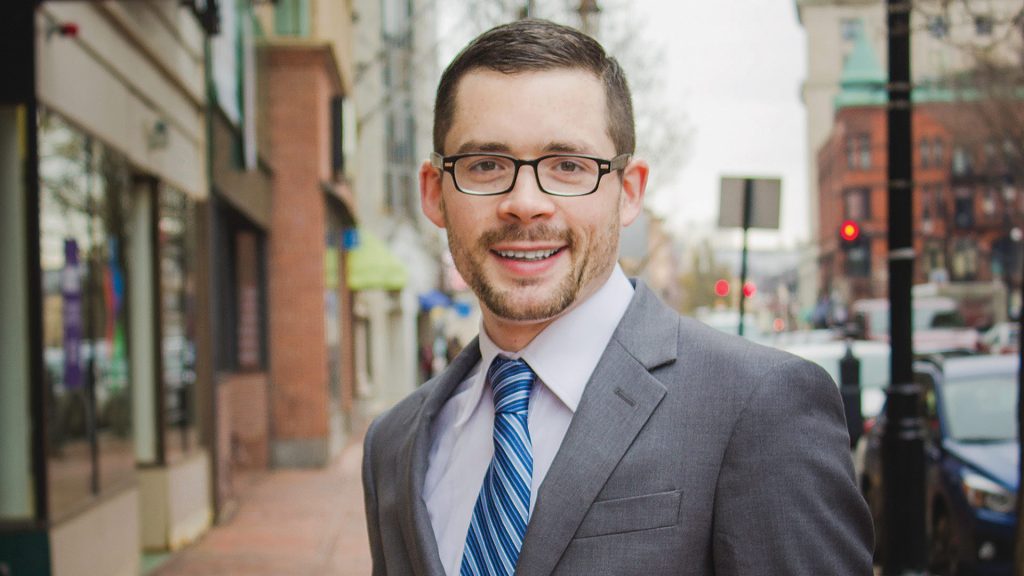
Delcie Bean says AI promises to disrupt not only administrative and computer careers, but law, medicine, and a wide range of other fields.
But that’s not the only viewpoint. “The most pessimistic view of this is that AI will do for humans what the automobile did for horses,” Wilson said. “There are some dire projections.”
Future … Tense
Loper and Wilson have delved into the capabilities and possibilities of ChatGPT and other AI tools on the higher-education level, and they’ve been impressed.
“ChatGPT is the hot topic because it’s a breakthrough in the way it uses large language processing,” Loper said. “It’s never been made available to the public like this before. The exciting part is how it processes data at a phenomenal speed — it’s absolutely amazing.”
And it’s not just regurgitating knowledge, he stressed. Xiaoxia Liu, assistant professor and director of Applied Data Science at Bay Path, has been using ChatGPT in her classes, helping students finish programming projects.
A Brief ‘Interview’ with ChatGPT
We went right to the source and asked ChatGPT for its take on this article’s topic. These are the answers it provided within seconds.
How will ChatGPT and other AI tools threaten the job market in the coming years?
AI tools and automation have already impacted the job market in many ways, and it is likely that this trend will continue in the coming years. ChatGPT and other AI tools can automate repetitive or low-level tasks, leading to job displacement for those whose work can be automated.
However, it’s essential to note that AI tools and automation can also create new job opportunities, particularly in areas that require specialized skills or expertise in implementing and managing AI technology. Additionally, the use of AI tools can increase productivity and reduce costs, which can result in businesses expanding and creating new job positions.
Overall, the impact of AI on the job market is complex and multi-faceted. While some jobs may be replaced by automation, new opportunities may arise, and existing roles may evolve and require different skill sets. It is essential for individuals and businesses to adapt to these changes by acquiring new skills and embracing the opportunities presented by AI.
What are some jobs that ChatGPT and other AI tools will impact the most?
ChatGPT and other AI tools are likely to impact a range of jobs, particularly those that involve repetitive or low-level tasks that can be automated. Some examples of jobs that may be impacted the most include:
• Customer-service representatives: ChatGPT can automate many customer service tasks, such as answering common questions or directing customers to the appropriate department.
• Data-entry clerks: AI tools can be used to scan and input data, reducing the need for manual data-entry clerks.
• Factory workers: AI-powered robots can perform tasks such as assembly-line work, reducing the need for human workers.
• Drivers: The use of self-driving cars and trucks may impact the job market for drivers in the coming years.
• Financial analysts: AI tools can analyze financial data and identify patterns, potentially reducing the need for human financial analysts.
• Retail salespeople: The rise of e-commerce and automated checkout systems may reduce the need for human retail salespeople.
• Administrative assistants: AI tools can be used to automate tasks such as scheduling appointments, managing email, and organizing files, reducing the need for human administrative assistants.
It’s important to note that the impact of AI on these jobs may vary depending on the industry, location, and other factors. While AI may automate some tasks, it may also create new job opportunities in areas such as data analysis, AI development and maintenance, and other specialized roles.
Write a haiku about how AI might change the way people work.
Machines learn and grow.
Work becomes more efficient.
Humans thrive with ease.
“She gives them a start, and then they have to finish it; they use Python or whatever to finish it,” Loper explained. “Now, she’s letting them use ChatGPT, and they’re finishing it in seconds. And it’s very accurate, very fast. She’s excited about that. That’s an example where ChatGPT uses large language learning to help it finish something that you started without you giving it much guidance at all, other than the start of the program.”
Loper noted that ChatGPT also gives different answers to questions based on who’s asking and in what way.
“The algorithm, for whatever reason, is drawing on what it thinks is ideal, but your past references influence the way that it searches. The type of question you ask generates a certain type of format and answer. So if you’re asking a business question, you get an answer in a business format. If you’re asking a question for a literary magazine, you get a different format.”
And that raises issues with academic plagiarism, Loper noted, because professors can no longer throw a chunk of a student’s work into Google to get a definite take on whether something was lifted, verbatim, from another source.
He has experimented with generating presentations from ChatGPT based on a series of prompts, and recognizes the ramifications for students. “It was logically laid out and put in a format that, if a student gave it to me, I would say, ‘damn, that’s good. You really learned this material.’”
When it comes to cracking down on plagiarism, Wilson added, “we might have to abandon ship on that in a way, because it’s not so much about being original anymore as being creative in your inquiry and critical in your understanding of it.”
Wilson called up other AI tools as well during his talk with BusinessWest, from Butternut AI, which can build a website in 20 seconds, to Pictory AI, which generates videos, to Wondercraft AI, which asks for discussion prompts and will generate a full podcast, featuring multiple voices.
“I teach a business-analytics class, where it was all research, research, research. I don’t think it’s about research anymore,” he said of the way AI will affect academia. “I think it’s about asking the right questions. It’s about the right inquiry. It may not be about writing anymore. It may be about editing and getting a draft from the AI expert and then adjusting it. The amount of content that can be created is staggering.”
Even classroom lectures can benefit, he added. “I can put in a few prompts, and it generates an entire lecture. I can go in and change the text, which will then be re-narrated through AI. Suddenly, all my content is better organized.”
Amid all these implications is the compelling idea that AI will only get sharper.

James Wilson
“We’ve all gotten used to Siri, and we’ve all gotten used to Google, but now you’re going to have this super-intelligent, conversational assistant with you,” Wilson said.
Loper added that these discussions are no longer theoretical. He noted that speakers at the Davos World Economic Forum, among others, have been thinking seriously about what types of work are going to be replaced by artificial intelligence and what careers will continue to be dominated by human beings, with their unique sensing and critical skills.
“Human beings aren’t going away any time soon, but we’re going to have a level of augmentation that we’ve never experienced, and we don’t know how to work with it yet. It’s so new,” he added. “James and I are playing with ChatGPT, and we’re kind of in awe of it, but we’re just skimming the surface compared to some of the ways people are using it. It’s just amazing.”
Added Wilson, “if you try to imagine this in a much smaller sense, it’s like when the smartphone came out — how did that change business? Texting and emailing and video chat reconfigured the way things are done, but in a smaller sense.”
Loper agreed. “This is much bigger than anything like that.”
Risk and Reward
Przemyslaw Grabowicz, a computer scientist in the College of Information and Computer Science at UMass Amherst, is heading up a research initiative called EQUATE (which stands for equity, accountability, trust, and explainability), which is currently developing a coordinated response to the Biden administration’s request for public comment on its AI Accountability Policy.
“As a computer scientist, I believe technology can make our lives better, maybe in some senses easier,” he told BusinessWest. “But I think there’s a risk that, if we step into new technologies too quickly, then society may develop a distrust for new technology that may, in the end, slow down developments.”
The National Telecommunications and Information Administration (NTIA), a Commerce Department agency that advises the White House on telecommunications and information policy, is studying whether there are measures that could be implemented assure that AI systems are “legal, effective, ethical, safe, and otherwise trustworthy.”
“Responsible AI systems could bring enormous benefits, but only if we address their potential consequences and harms,” NTIA Administrator Alan Davidson told Reuters. “For these systems to reach their full potential, companies and consumers need to be able to trust them.”
In crafting accountability policies, Grabowicz said, leaders in all areas of life need to think carefully about the consequences of technology development and ways in which profits from this development will be converted into long-term societal gain rather than short-term profits. If not, such technology may contribute to the growth of misinformation and polarization.
“As a society, nobody wants these kinds of consequences, but if corporations focus on short-term financial gain, they may not consider the potential harmful consequences of technology being used in a way that it wasn’t meant to when it was developed.”
Such questions, Bean noted, will be further accelerated by advances in other technologies, especially robotics. “We are rapidly approaching the day when there will be free-standing robots in our lives who are able to think, make decisions, and interact with the world around them.”
In terms of security, he went on, it is hard to quantify the threat. “With Microsoft’s new tool VALL-E, which can mimic a human voice with a sample size as small as three seconds; deepfakes being able to be produced in minutes by anyone with basic computer skills; and more and more data being available to be mined, we are going to need to rethink security.
“While it is possible to imagine how technology will respond to meet these threats, the risk to businesses is the gap that exists in between the threats coming online and the response being available and adopted,” he added. “A lot of businesses are likely to face real threats in that gap — not to mention physical security, things like hacking a moving vehicle or sending a robot to conduct a robbery.”
In short, Bean said, “while there is much to look forward to, there are certainly many threats that will need to be understood and addressed.”
Meanwhile, artificial intelligence continues to evolve — in ways we may not even see coming.







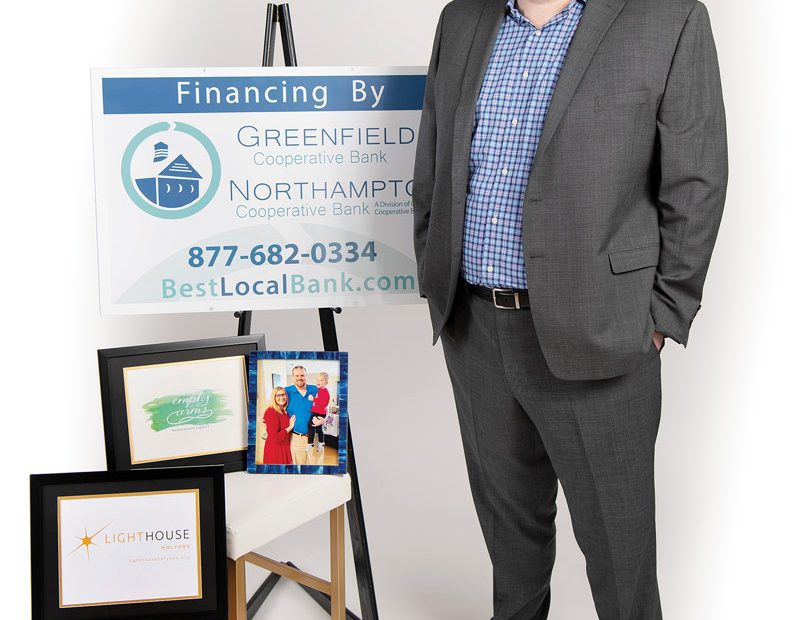
 As a commercial lender at Greenfield Northampton Cooperative Bank, Adam Baker led all team members in both number of loans originated and dollar amount closed. Not just one year, but in seven consecutive years, from 2016 to 2022.
As a commercial lender at Greenfield Northampton Cooperative Bank, Adam Baker led all team members in both number of loans originated and dollar amount closed. Not just one year, but in seven consecutive years, from 2016 to 2022.


 Madison Bull, as one of her several 40 Under Forty nominators noted, wears a number of hats.
Madison Bull, as one of her several 40 Under Forty nominators noted, wears a number of hats.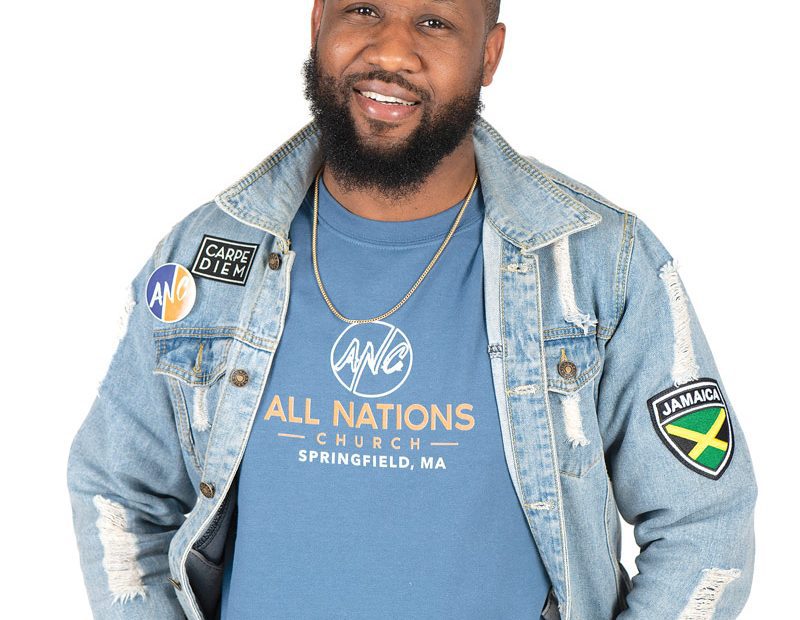
 Robert Carter’s career in IT and robotics has taken him to a number of positions, ranging from 11 years at MassMutual, where he worked his way up to robotics process automation developer — tech lead, to CVS Health, where he currently leads a team of developers as a robotics process automation consultant.
Robert Carter’s career in IT and robotics has taken him to a number of positions, ranging from 11 years at MassMutual, where he worked his way up to robotics process automation developer — tech lead, to CVS Health, where he currently leads a team of developers as a robotics process automation consultant.
 Jessica Chapin was a decorated collegiate athlete. In 2010 alone, she was named the University Athletic Assoc. Women’s Basketball Player of the Year, the Brandeis University Female Athlete of the Year, and a State Farm Women’s Basketball All-American; in 2018, she became a New York State Section 5 Basketball Hall of Fame inductee.
Jessica Chapin was a decorated collegiate athlete. In 2010 alone, she was named the University Athletic Assoc. Women’s Basketball Player of the Year, the Brandeis University Female Athlete of the Year, and a State Farm Women’s Basketball All-American; in 2018, she became a New York State Section 5 Basketball Hall of Fame inductee.

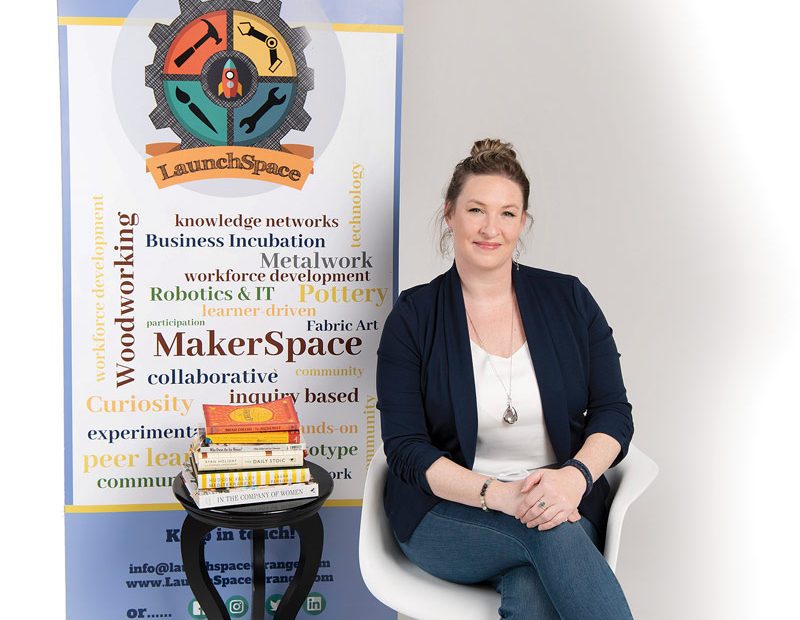
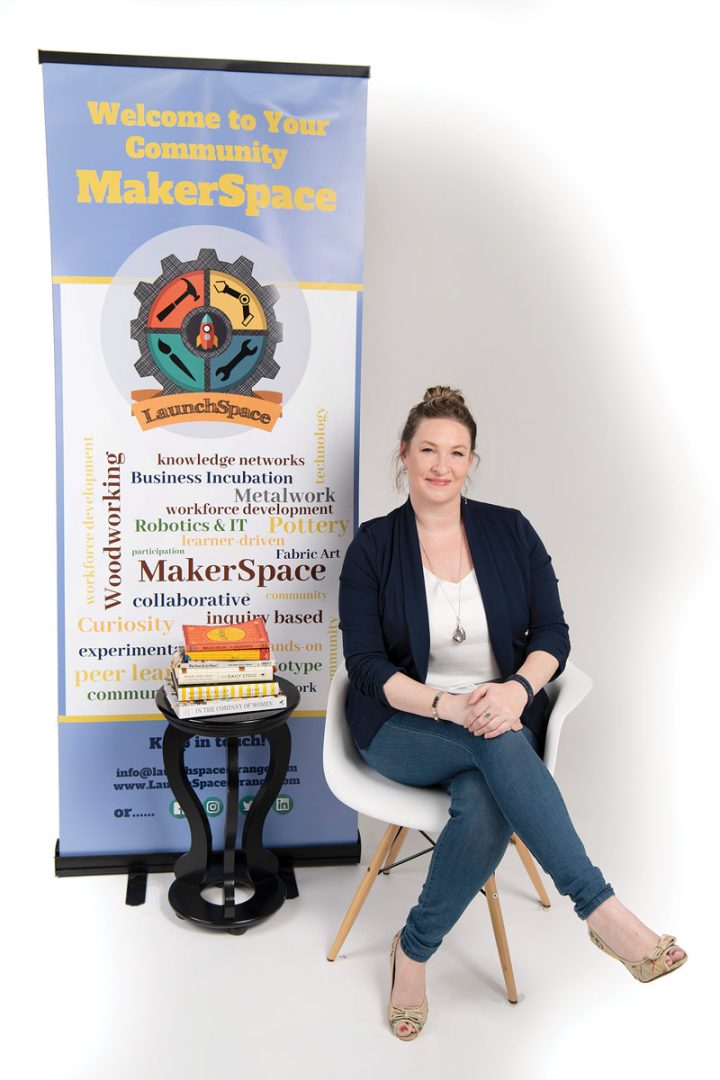
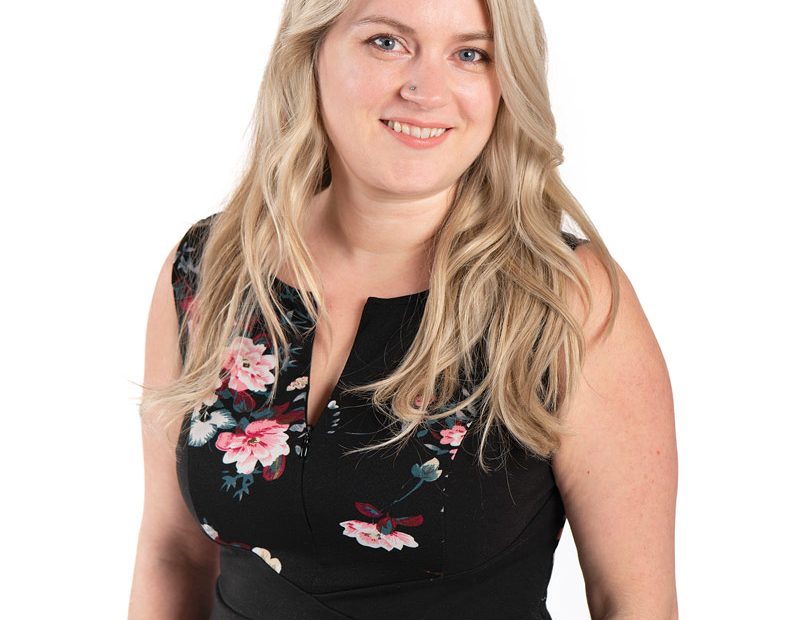
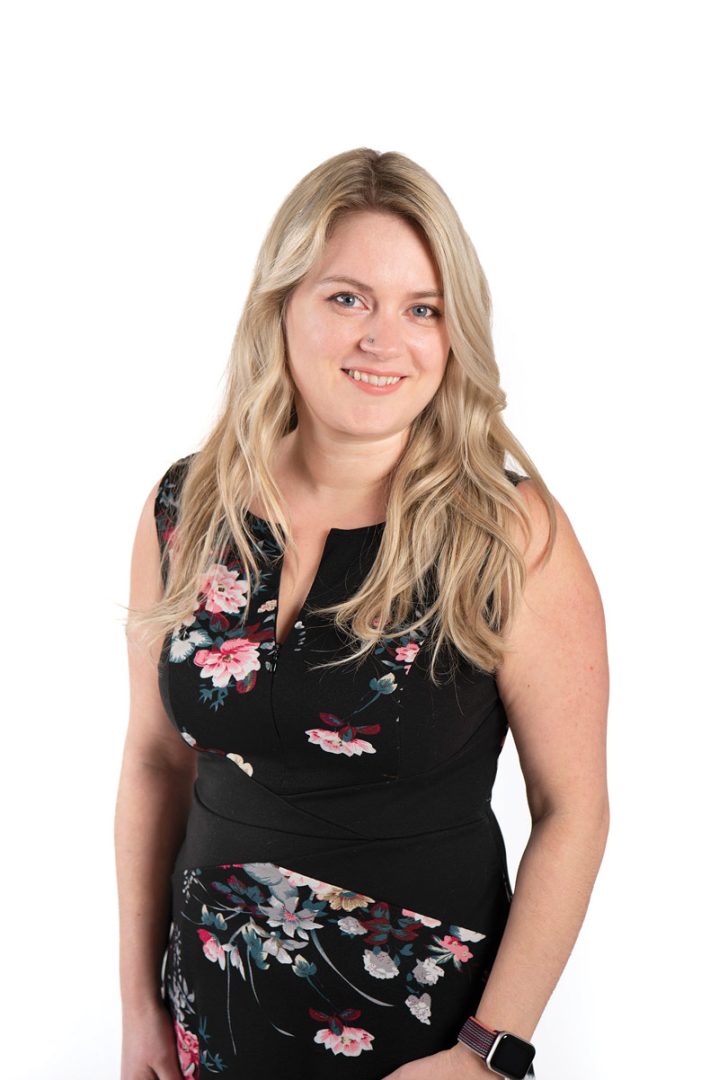 Sarah Erman didn’t attend college to prepare for a financial-services career. In fact, her focus as an undergraduate at MCLA was photojournalism.
Sarah Erman didn’t attend college to prepare for a financial-services career. In fact, her focus as an undergraduate at MCLA was photojournalism.
 Sara Hulseberg tells a story that demonstrates the meaning of a loyal clientele.
Sara Hulseberg tells a story that demonstrates the meaning of a loyal clientele.
 Jeffery Markham Jr. is no stranger to the nonprofit world, having worked with them in many capacities, from volunteer efforts to convening them in a major public-health research project. Now, the tables have turned — literally.
Jeffery Markham Jr. is no stranger to the nonprofit world, having worked with them in many capacities, from volunteer efforts to convening them in a major public-health research project. Now, the tables have turned — literally.
 Growing up, Dallas Pilecki said, “I always wanted to help people. I had a passion for that.”
Growing up, Dallas Pilecki said, “I always wanted to help people. I had a passion for that.”
 By his teen years, Kyle Snow was working hard at landscaping and snow removal — when weekends and summer breaks from school allowed him to. Even before that, at a very young age, he was busy working around the Greenfield shop of his family’s business.
By his teen years, Kyle Snow was working hard at landscaping and snow removal — when weekends and summer breaks from school allowed him to. Even before that, at a very young age, he was busy working around the Greenfield shop of his family’s business.



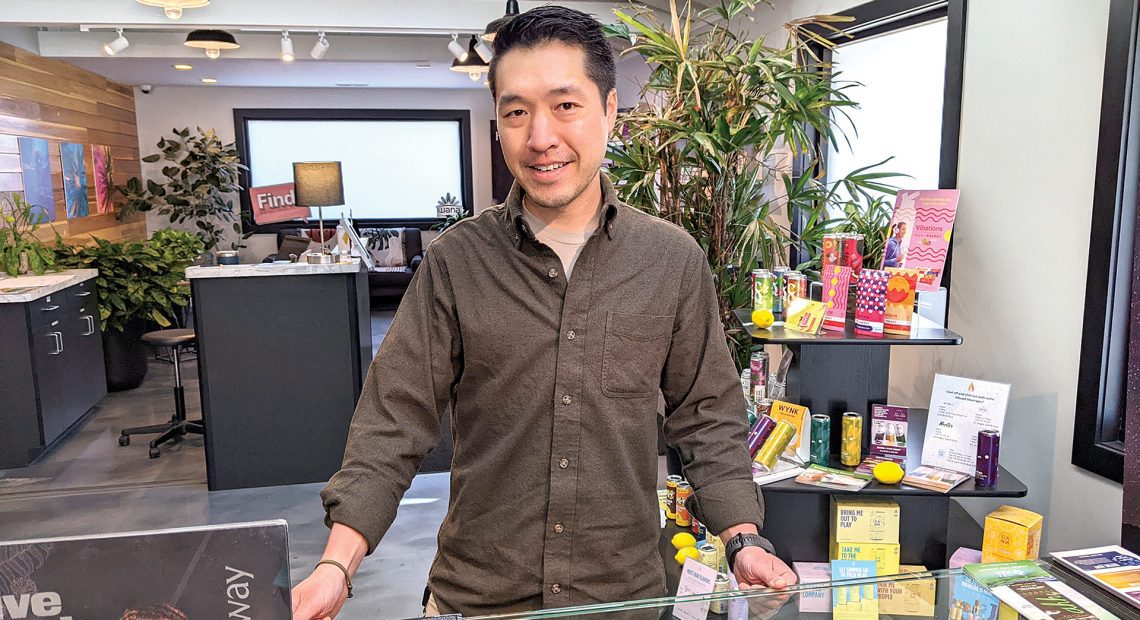
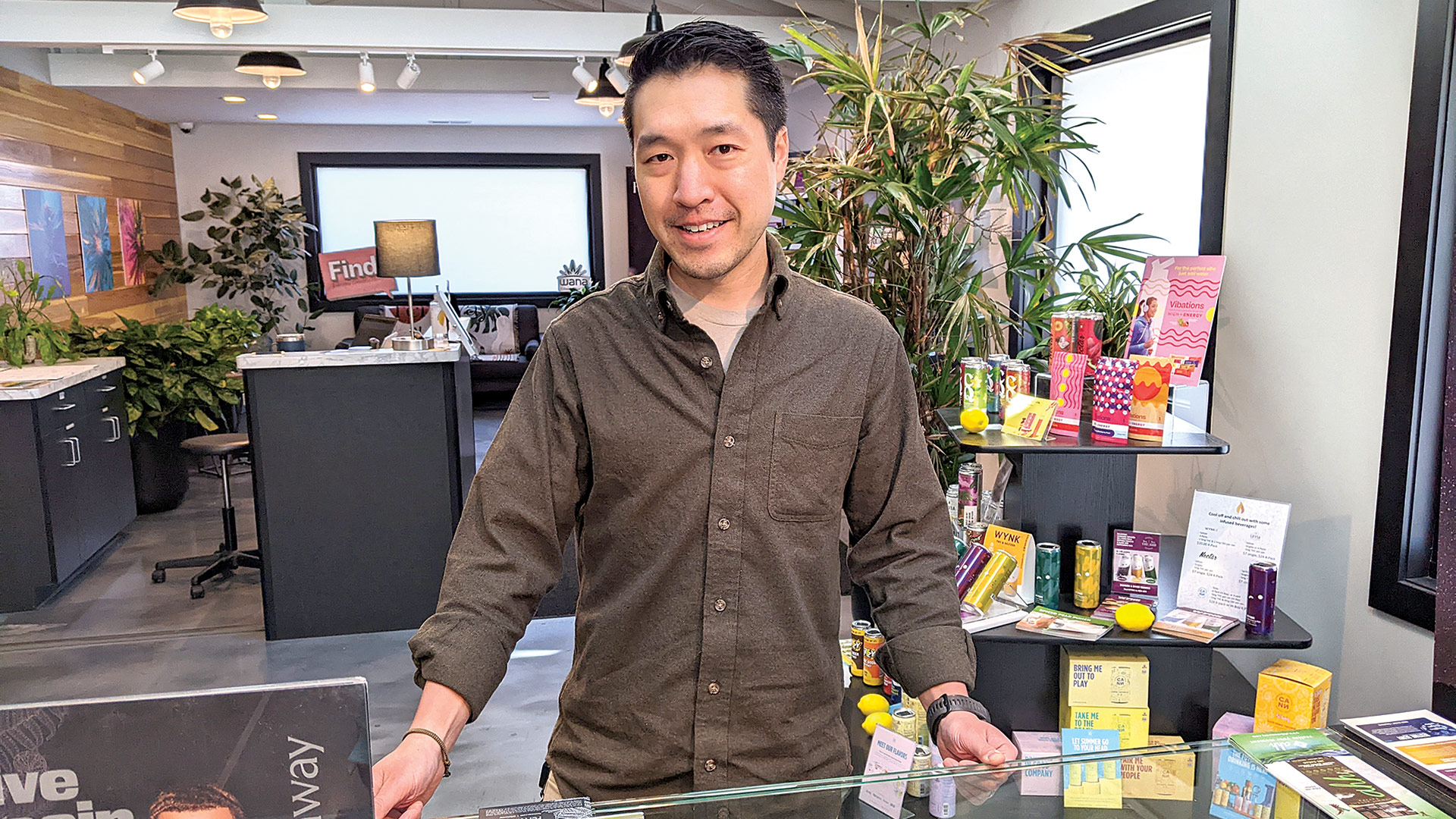







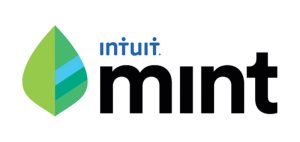






 Women’s Health agrees, adding that “testers loved the huge choice of workouts available, from strength sessions to yoga to meditation, and found it easy to filter classes on the app by duration and difficulty to find the right one for them. Our team also said they were persuaded to push beyond their usual limits during each session thanks to motivational instructors, who helped keep their form in check with non-stop helpful pointers — though some testers found them a tad too intense for their liking.”
Women’s Health agrees, adding that “testers loved the huge choice of workouts available, from strength sessions to yoga to meditation, and found it easy to filter classes on the app by duration and difficulty to find the right one for them. Our team also said they were persuaded to push beyond their usual limits during each session thanks to motivational instructors, who helped keep their form in check with non-stop helpful pointers — though some testers found them a tad too intense for their liking.”





